

What is cultural tourism and why is it growing?
Disclaimer: Some posts on Tourism Teacher may contain affiliate links. If you appreciate this content, you can show your support by making a purchase through these links or by buying me a coffee . Thank you for your support!
Cultural tourism is big business. Some people seek to embark on their travels with the sole intention of having a ‘cultural’ experience, whereas others may experience culture as a byproduct of their trip. We can argue that there is some form of cultural tourism in most holidays (even when taking an all-inclusive holiday you might try to local beer, for example).
But what do we mean by the term ‘cultural tourism’? What’s it all about? In this post I will explain what is meant by the term cultural tourism, providing a range of academic definitions. I will also explain what the different types of cultural tourists are, give examples of cultural tourism activities and discuss the impacts of cultural tourism. Lastly, I will provide a brief summary of some popular cultural tourism destinations.
What is cultural tourism?
Cultural tourism is the act of travellers visiting particular destinations in order to experience and learn about a particular culture . This can include many activities such as; attending events and festivals, visiting museums and tasting the local food and drinks.
Cultural tourism can also be an unintentional part of the tourism experience, whereby cultural immersion (with the local people, their language, customs, cuisine etc) is an inevitable part of a person’s holiday.
Cultural tourism definitions
It has been suggested that tourism is the ideal arena in which to investigate the nature of cultural production (MacCannell, 1976). Tourism provides endless opportunities to learn about the way other people live, about their society and their traditions. Whether you are attending the Running of the Bulls Festival in Pamplona , visiting the pyramids in ancient Egypt , taking a tour of the tea plantations in China or enjoying the locally brewed Ouzo on your all-inclusive holiday to Greece, you will inevitably encounter some form of cultural tourism as part of your holiday experience.
The World Tourism Organisation (WTO) (1985) broadly define cultural tourism as the movements of persons who satisfy the human need for diversity, tending to raise the cultural level of the individual and giving rise to new knowledge, experience and encounters. Cultural tourism is commonly associated with education in this way, some describing it more narrowly as educational cultural tourism (e.g. Bualis and Costa, 2006; Harner and Swarbrooke, 2007; Richards, 2005).
Although a common, more specific definition has not been agreed amongst academics due to the complexity and subjectivity of the term, there do appear to be two distinct viewpoints. The first focusses upon the consumption of cultural products such as sites or monuments (Bonink, 1992; Munsters, 1994), and the second comprises all aspects of travel, where travellers learn about the history and heritage of others or about their contemporary ways of life or thought (MacIntosh and Goeldner, 1986).
Csapo (2012) pertains that the umbrella term of cultural tourism can encompass a number of tourism forms including heritage (material e.g. historic buildings and non-material e.g. literature, arts), cultural thematic routes (e.g. spiritual, gastronomic, linguistic), cultural city tourism, traditions/ethnic tourism, events and festivals, religious tourism and creative culture (e.g. performing arts, crafts).
Types of cultural tourists
In attempt to understand the scope of cultural tourism academics have developed a number of typologies, usually based upon the tourist’s level of motivation.
Bywater (1993) differentiated tourists according to whether they were culturally interested, motivated or inspired.
Culturally interested tourists demonstrate a general interest in culture and consume cultural attractions casually as part of a holiday rather than consciously planning to do so.
Culturally motivated tourists consume culture as a major part of their trip, but do not choose their destination on the basis of specific cultural experiences, whereas for culturally inspired tourists culture is the main goal of their holiday.
A more complex typology was proposed by McKercher and Du Cros (2002), who defined tourists based upon the depth of the cultural experience sought, distinguishing them in to one of five hierarchical categories.
The first is the purposeful cultural tourist for whom cultural tourism is their primary motive for travel. These tourists have a very deep cultural experience.
The second category is the sightseeing cultural tourist for whom cultural tourism is a primary reason for visiting a destination, but the experience is more shallow in nature.
The serendipitous cultural tourist does not travel for cultural reasons, but who, after participating, ends up having a deep cultural tourism experience, whilst the casual cultural tourist is weakly motivated by culture and subsequently has a shallow experience.
Lastly, the incidental cultural tourist is one who does not travel for cultural tourism reasons but nonetheless participates in some activities and has shallow experiences.
Adapting this theory, Petroman et al (2013) segments tourists based upon their preferred cultural activities.
The purposeful cultural tourist, described as according to Mckercher and Du Cros (2002), enjoys learning experiences that challenge them intellectually and visits history museums, art galleries, temples and heritage sites that are less known.
The tour-amateur cultural tourist is akin with the sightseeing cultural tourist above and they often travel long distances, visit remote areas, enjoy tours and wandering through the streets.
The occasional cultural tourist plays a moderate role in the decision of travelling and enjoys an insignificant cultural experience, their preferred activities being to visit attractions and temples that are easy to reach and to explore, although not to the extent that the tour-amateur cultural tourist does.
The incidental cultural tourist plays a small or no role in the decision to travel and enjoys an insignificant cultural experience, whilst visiting attractions that area within easy reach and heritage theme parks.
The last segment is the accidental cultural tourist, who plays a small or no role in the decision to travel but enjoys a deep cultural experience. This tourist type is diverse and as such has no preferred activities attributed to it.
Importance of cultural tourism
Cultural tourism is important for many reasons. Perhaps the most prominent reason is the social impact that it brings.
Cultural tourism can help reinforce identities, enhance cross cultural understanding and preserve the heritage and culture of an area. I have discussed these advantages at length in my post The Social Impacts of Tourism , so you may want to head over there for more detail.
Cultural tourism can also have positive economic impacts . Tourists who visit an area to learn more about a culture or who visit cultural tourism attraction, such as museums or shows, during their trip help to contribute to the economy of the area. Attractions must be staffed, bringing with it employment prospects and tertiary businesses can also benefit, such as restaurants, taxi firms and hotels.
Furthermore, for those seeking a deep cultural experience, options such as homestays can have positive economic benefits to the members of the community who host the tourists.
Read also: Overtourism explained: What, why and where
Personally, I think that one of the most important benefits of cultural tourism is the educational aspect. Tourists and hosts alike can learn more about different ways of life. This can help to broaden one’s mind, it can help one to think differently and to be more objective. These are qualities that can have many positive effects on a person and which can contribute to making them more employable in the future.
Cultural tourism activities
Whether a tourist is seeking a deep cultural experience or otherwise, there are a wide range of activities that can be classified as cultural tourism. Here are a few examples:
- Staying with a local family in a homestay
- Having a tour around a village or town
- Learning about local employment, for example through a tour of a tea plantation or factory
- Undertaking volunteer work in the local community
- Taking a course such as cooking, art, embroidery etc
- Visiting a museum
- Visiting a religious building, such as a Mosque
- Socialising with members of the local community
- Visiting a local market or shopping area
- Trying the local food and drink
- Going to a cultural show or performance
- Visiting historic monuments
Impacts of cultural tourism
There are a range of impacts resulting from cultural tourism activities, both good and bad. Here are some of the most common examples:
Positive impacts of cultural tourism
Revitalisation of culture and art.
Some destinations will encourage local cultures and arts to be revitalised. This may be in the form of museum exhibitions, in the way that restaurants and shops are decorated and in the entertainment on offer, for example.
This may help promote traditions that may have become distant.
Preservation of Heritage
Many tourists will visit the destination especially to see its local heritage. It is for this reason that many destinations will make every effort to preserve its heritage.
This could include putting restrictions in place or limiting tourist numbers, if necessary. This is often an example of careful tourism planning and sustainable tourism management.
This text by Hyung You Park explains the principles of heritage tourism in more detail.
Negative impacts of cultural tourism
Social change.
Social change is basically referring to changes in the way that society acts or behaves. Unfortunately, there are many changes that come about as a result of tourism that are not desirable.
There are many examples throughout the world where local populations have changed because of tourism. Perhaps they have changed the way that they speak or the way that they dress. Perhaps they have been introduced to alcohol through the tourism industry or they have become resentful of rich tourists and turned to crime. These are just a few examples of the negative social impacts of tourism.
Read also: Business tourism explained: What, why and where
Globalisation and the destruction of preservation and heritage.
Globalisation is the way in which the world is becoming increasingly connected. We are losing our individuality and gaining a sense of ‘global being’, whereby we more and more alike than ever before.
Globalisation is inevitable in the tourism industry because of the interaction between tourists and hosts, which typically come from different geographic and cultural backgrounds. It is this interaction that encourage us to become more alike.
Standardisation and Commercialisation
Similarly, destinations risk standardisation in the process of satisfying tourists’ desires for familiar facilities and experiences.
While landscape, accommodation, food and drinks, etc., must meet the tourists’ desire for the new and unfamiliar, they must at the same time not be too new or strange because few tourists are actually looking for completely new things (think again about the toilet example I have previously).
Tourists often look for recognisable facilities in an unfamiliar environment, like well-known fast-food restaurants and hotel chains. Tourist like some things to be standardised (the toilet, their breakfast, their drinks, the language spoken etc), but others to be different (dinner options, music, weather, tourist attractions etc).
Loss of Authenticity
Along similar lines to globalisation is the loss of authenticity that often results from tourism.
Authenticity is essentially something that is original or unchanged. It is not fake or reproduced in any way.
The Western world believe that a tourist destination is no longer authentic when their cultural values and traditions change. But I would argue is this not natural? Is culture suppose to stay the same or it suppose to evolve throughout each generation?
Take a look at the likes of the long neck tribe in Thailand or the Maasai Tribe in Africa. These are two examples of cultures which have remained ‘unchanged’ for the sole purpose of tourism. They appear not to have changed the way that they dress, they way that they speak or the way that they act in generations, all for the purpose of tourism.
You can learn more about what is authenticity in tourism here or see some examples of staged authenticity in this post.
Culture clashes
Because tourism involves movement of people to different geographical locations cultural clashes can take place as a result of differences in cultures, ethnic and religious groups, values, lifestyles, languages and levels of prosperity.
Read also: Environmental impacts of tourism
The attitude of local residents towards tourism development may unfold through the stages of euphoria, where visitors are very welcome, through apathy, irritation and potentially antagonism when anti-tourist attitudes begin to grow among local people. This is represented in Doxey’s Irritation Index, as shown below.

Tourist-host relationships
Culture clashes can also be exasperated by the fundamental differences in culture between the hosts and the tourists.
There is likely to be economic inequality between locals and tourists who are spending more than they usually do at home. This can cause resentment from the hosts towards the tourists, particularly when they see them wearing expensive jewellery or using plush cameras etc that they know they can’t afford themselves.
Further to this, tourists often, out of ignorance or carelessness, fail to respect local customs and moral values.
There are many examples of ways that tourists offend the local population , often unintentionally. Did you know that you should never put your back to a Buddha? Or show the sole of your feet to a Thai person? Or show romantic affection in public in the Middle East?
Cultural tourism destinations
Whilst many would argue that cultural tourism is ingrained to some extent in travel to any country, there are some particular destinations that are well-known for their ability to provide tourists with a cultural experience.
Cultural tourism in India
It is impossible not to visit India and experience the culture. Even if you are staying in a 5 star Western all-inclusive hotel in Goa, you will still test Indian curries, be spoken to by Indian workers and see life outside of the hotel on your transfer to and from the airport.
For most people who travel to India, however, cultural tourism is far more than peeking outside of the enclave tourism bubble of their all-inclusive hotel.
Thousands of international tourists visit the Taj Mahal each year. Many more people visit the various Hindu and Buddhist temples scattered throughout the country as well as the various Mosques. Some visit the famous Varanassi to learn about reincarnation.
Most tourists who visit India will try the local dal, eat the fresh mutton and taste chai.
All of these activities are popular cultural tourism activities.
Cultural tourism in Thailand
Thailand is another destination that offers great cultural tourism potential. From the Buddhist temples and monuments and the yoga retreats to homestays and village tours, there are ample cultural tourism opportunities in Thailand .
Cultural tourism in Israel
Israel is popular with religious tourists and those who are taking a religious pilgrimage, as well as leisure tourists. I visited Israel and loved travelling around to see the various sights, from Bethlehem to Jerusalem . I’m not religious in any way, but I loved learning about the history, traditions and cultures.
Cultural tourism in New York
New York is a city that is bustling with culture. It is world famous for its museums and you can learn about anything from World War Two to the Twin Towers here.
Many would argue that shopping is ingrained in the culture of those who live in New York and many tourists will take advantage of the wide selection of products on offer and bargains to be had on their travels to New York.
You can also treat yourself to watching a traditional West End show, trying some of the famous New York Cheesecake and enjoying a cocktail in Times Square!
Cultural tourism in Dubai
Dubai might not be the first destination that comes to mind when you think of cultural tourism, but it does, in fact, have a great offering.
What I find particular intriguing about Dubai is the mix of old and new. One minute you can be exploring the glitz and glamour of the many high-end shopping malls and skyscrapers and the next you can be walking through a traditional Arabian souk.
Cultural tourism: Conclusion
As you can see, there is big business in cultural tourism. With a wide range of types of cultural tourists and types of cultural tourism experiences, this is a tourism sector that has remarkable potential. However, as always, it is imperative to ensure that sustainable tourism practices are utilised to mitigate any negative impacts of cultural tourism.
If you are interested in learning more about topics such as this subscribe to my newsletter ! I send out travel tips, discount coupons and some material designed to get you thinking about the wider impacts of the tourism industry (like this post)- perfect for any tourism student or keen traveller!
Further reading
Want to learn more about cultural tourism? See my recommended reading list below.
- Cultural Tourism – A textbook illustrating how heritage and tourism goals can be integrated in a management and marketing framework to produce sustainable cultural tourism.
- Deconstructing Travel: Cultural Perspectives on Tourism – This book provides an easily understood framework of the relationship between travel and culture in our rapidly changing postmodern, postcolonial world.
- Re-Investing Authenticity: Tourism, Place and Emotions – This ground-breaking book re-thinks and re-invests in the notion of authenticity as a surplus of experiential meaning and feeling that derives from what we do at/in places.
- The Business of Tourism Management – an introduction to key aspects of tourism, and to the practice of managing a tourism business.
- Managing Sustainable Tourism – tackles the tough issues of tourism such as negative environmental impact and cultural degradation, and provides answers that don’t sacrifice positive economic growth.
- Tourism Management: An Introduction – An introductory text that gives its reader a strong understanding of the dimensions of tourism, the industries of which it is comprised, the issues that affect its success, and the management of its impact on destination economies, environments and communities.
- Responsible Tourism: Using tourism for sustainable development – A textbook about the globally vital necessity of realising sustainable tourism.
Liked this article? Click to share!
Cultural Tourism: Definitions, Types, Advantages & Disadvantages, or Stakeholders of Cultural Tourism
Cultural tourism is a rapidly growing segment within the global travel industry, catering to individuals seeking to immerse themselves in local populations’ customs, traditions, and lifestyles. It combines the elements of leisure with an authentic experience of a destination’s unique historical, architectural, artistic, and culinary aspects. As a result, this form of tourism allows travellers to gain a deeper appreciation and understanding of different societies and their cultural characteristics.
In recent years, the demand for cultural tourism has been on the rise as more people are interested in exploring foreign customs and cultural experiences beyond the typical tourist attractions. This trend fosters cross-cultural connections and mutual understanding and creates positive economic and social impacts on local communities. By preserving and showcasing their traditions, local people have the opportunity to generate income and employment while maintaining a sense of pride in their cultural heritage.
With the increasing focus on sustainability and responsible tourism practices, cultural tourism sets itself apart by emphasizing the importance of engaging with local communities, adhering to ethical standards and minimizing negative impacts on the environment. As such, it presents a viable option for tourists who wish to expand their horizons while also contributing positively to the places they visit.
Table of Contents
Understanding cultural tourism.
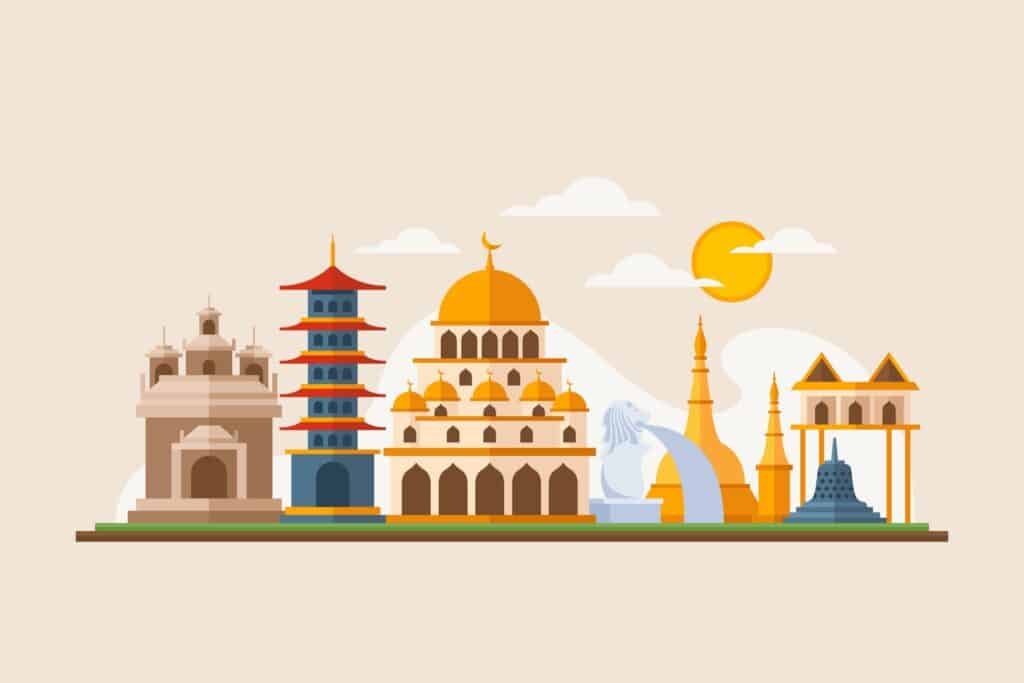
Cultural tourism is a significant and growing aspect of the global tourism industry. The United Nations World Tourism Organization (UNWTO ) defines cultural tourism as the movement of people to cultural attractions away from their normal residence, with the intention of gathering new information and experiences that satisfy their cultural needs. It encompasses various activities undertaken by tourists to explore and experience different cultures, customs, and traditions.
One of the key aspects of cultural tourism is the opportunity it provides visitors to learn and engage with local communities, their history, and their way of life. This tourism is more than just visiting heritage sites or attending cultural events; it involves understanding and experiencing how people from different cultures live, express themselves through art, and maintain their traditions.
Cultural tourism fosters mutual understanding and respect between people from different cultural backgrounds. It encourages dialogue and exchange, breaking down social and cultural barriers and contributing to more tolerant societies. This form of tourism is an essential aspect of sustainable tourism development, as it seeks to preserve precious heritage for future generations while supporting economic growth for local communities.
As the tourism industry continues to grow, the demand for unique and authentic experiences increases. Cultural tourism serves to meet this demand by offering visitors the opportunity to immerse themselves in various cultural settings, fostering a deeper understanding of the world and its diverse cultures.
Importance of Cultural Tourism
Cultural tourism plays a significant role in society as it helps preserve and promote the values, beliefs, traditions, and heritage that define a particular culture. It allows individuals and communities to exhibit unique perspectives on arts, rituals, folklore, music, literature, language, oral traditions, and other cultural elements. Cultural tourism serves as a bridge between societies, aiding in fostering mutual respect, tolerance, and understanding among various cultures.
Economic benefits are also apparent through cultural tourism. Visitors contribute to the local economy, supporting local businesses and sustaining host communities’ cultural products and experiences. By engaging in cultural tourism, visitors gain an authentic understanding of indigenous and local cultures, empowering them to appreciate the rich diversity and uniqueness of the world.
Furthermore, cultural tourism helps preserve cultural heritage, vital for maintaining a sense of identity and continuity for future generations. This preservation and promotion of different cultures provide a sense of pride and belonging for people who are part of those traditions. In turn, this enhances cultural exchange, allowing individuals to learn about other ways of life while appreciating their values and beliefs.
Cultural tourism also supports the sustainability of performing arts and other creative industries. Through various interactions with artists and performers, visitors can develop an appreciation for a wide range of artistic expressions, contributing to the overall vitality of the art world.
Through the development of cultural tourism, a society can showcase its cultural heritage while contributing to its economic prosperity. By embracing the importance of cultural tourism, we can foster a greater understanding, appreciation, and celebration of the rich tapestry of customs, beliefs, and traditions that make up the world’s diverse cultures.
Types of Cultural Tourism
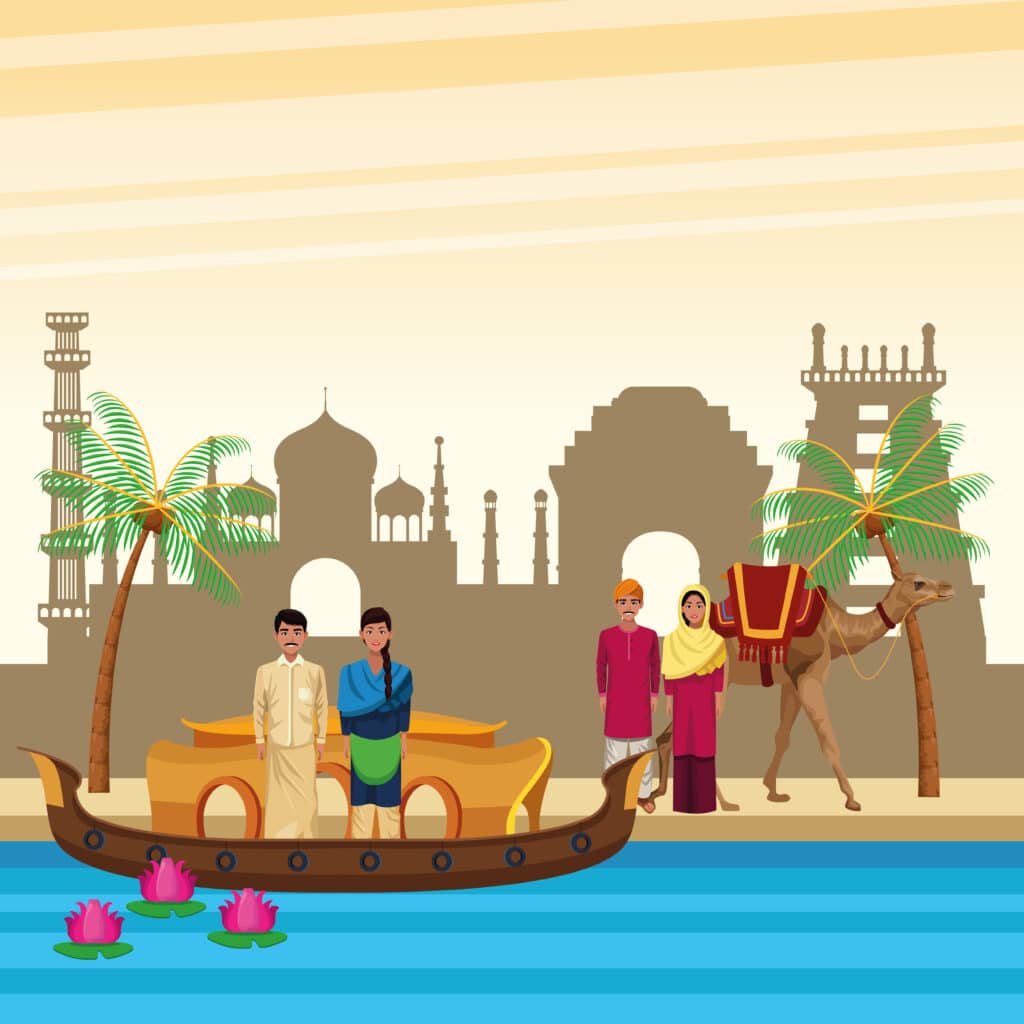
Cultural tourism allows travellers to immerse themselves in the history, heritage, and traditions of different places around the world. This form of tourism can be categorized into several types, each offering a unique way for visitors to experience and appreciate local cultures.
One type of cultural tourism is Historical and Heritage Tourism . This focuses on exploring sites related to a region’s past, such as ancient archaeological sites, monuments, and museums. It can instil a sense of wonder and appreciation for past civilizations’ achievements and teach travellers about the history of the places they visit.
Moving to the artistic side, Arts Tourism highlights the creative aspects of a culture. Tourists visit galleries, theatres, and concerts to experience local art, music, dance, and drama. It allows them to understand different communities’ aesthetic and expressive tendencies, opening their minds to new perspectives and forms of creativity.
Religious and Spiritual Tourism is another common form, where tourists visit religious sites, such as temples, churches, and mosques, or engage in spiritual practices like meditation and yoga. This type of cultural tourism can provide insights into various societies’ belief systems and rituals, fostering understanding and tolerance among people of different faiths.
However, culture isn’t just about history, arts, and religion but also daily life. Ethno and Indigenous Tourism involves tourists visiting and interacting with indigenous communities to learn about their customs, way of life, and unique perspectives on the world. This type of cultural tourism encourages empathy and cross-cultural understanding while emphasising respect for indigenous people’s rights and dignity.
Lastly, Culinary and Agritourism put emphasis on local food and drink traditions, as well as the agricultural practices that underpin them. This type of tourism can include attending food festivals, partaking in cooking classes or workshops, and visiting farms, vineyards, or breweries. Culinary experiences help tourists understand the richness of a region’s flavours and the relationship between local communities and their land and resources.
In summary, cultural tourism comes in various forms, appealing to different interests and tastes. It offers travellers a chance to explore and interact with diverse cultures, fostering connections and understanding among people around the world.
Forms of Cultural Tourism
Cultural tourism offers a wide range of experiences for travellers who seek to immerse themselves in different cultures, traditions, and ways of life. Various forms of cultural tourism cater to different interests and preferences.
Museums and galleries play a significant role in cultural tourism as they showcase a certain location’s history, art, and culture. Examples include art galleries displaying local and international masterpieces and museums featuring exhibits about the history and development of a specific region or theme.
Monuments and historic sites attract cultural tourists interested in exploring the past. Famous landmarks, archaeological sites, and heritage buildings tell the stories of civilizations and cultures that once thrived. UNESCO World Heritage Sites are often at the top of travellers’ lists, representing the world’s most significant cultural and natural heritage.
Architecture as a form of cultural tourism exposes tourists to varying architectural styles and meanings. Walking tours, cityscapes, and visits to iconic buildings provide a deeper understanding of a city’s architectural design’s cultural, social, and political influences.
Festivals and special events are another important aspect of cultural tourism, highlighting a particular community’s local customs and practices. These may include carnivals, parades, performances, traditional dances, and food festivals that provide a unique insight into the cultural identity of a place.
Gastronomy and cuisine play an integral role in the cultural tourism experience, as they allow tourists to savour the flavours and ingredients unique to a location. Local markets, food tours, cooking classes, and traditional restaurants all offer opportunities to appreciate the culinary heritage of a destination.
Shopping for crafts and textiles is a popular form of cultural tourism, as it allows travellers to bring home tangible memories of their journeys. Local artisans may showcase their talents through handmade textiles, pottery, jewellery, and other crafts, reflecting their community’s cultural heritage and artistic expression.
Cultural tourism encompasses diverse experiences, enabling travellers to engage with their chosen destination’s rich history, art, architecture, events, cuisine, and crafts. By exploring these varied aspects, visitors can deepen their understanding and appreciation of the world’s unique cultural landscapes.
Tangible and Intangible Cultural Attractions
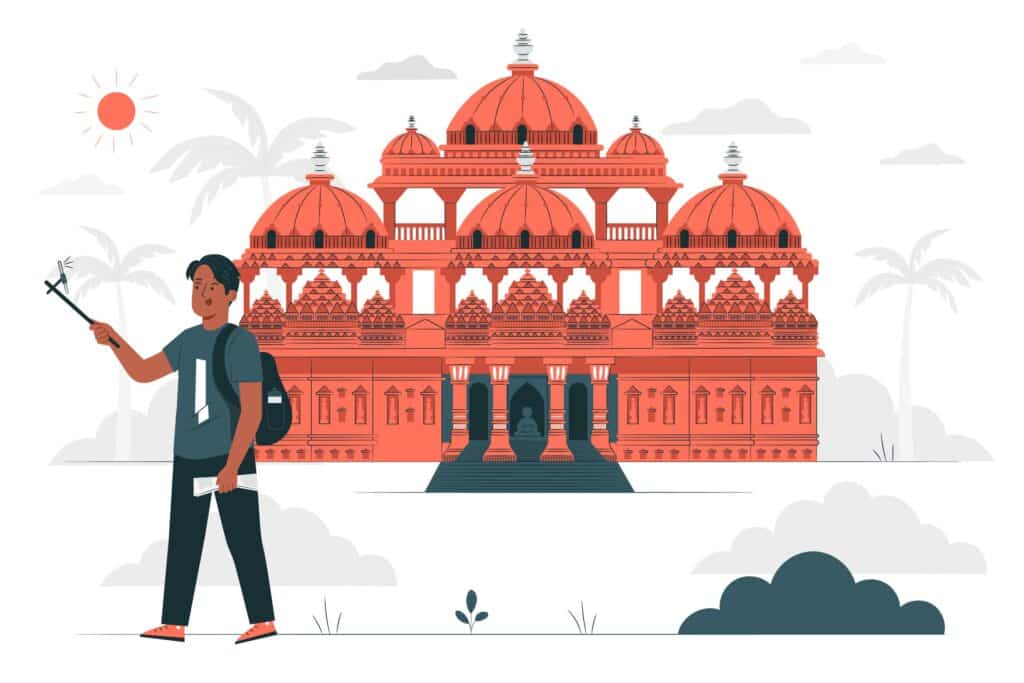
Cultural tourism often focuses on two major aspects: tangible and intangible cultural attractions. These attractions shape a destination’s identity, providing depth and context for visitors and facilitating cultural exchange. This section will explore various facets of tangible and intangible attractions, comprehensively understanding their significance and diversity.
Tangible cultural attractions encompass elements of history, arts, and architecture that visitors can physically experience. Notable examples include monuments, visual art, and crafts that showcase local communities’ unique skills and traditions. Such attractions often reflect centuries of evolution and showcase the ingenuity of a region’s inhabitants. By visiting these sites and engaging with these art forms, travellers gain firsthand insights into the cultural heritage of their destination.
On the other hand, intangible cultural attractions comprise the non-material aspects of a culture that contribute to its unique characteristics and traditions. Music, social practices, festive events, and customs are some of the intangible elements that enrich the cultural landscape of a tourist destination. Interaction with local people plays a crucial role in understanding the region’s intangible cultural attractions, as they act as custodians of these traditions and their oral histories.
A dynamic interplay exists between tangible and intangible cultural attractions, creating a vibrant, multi-dimensional experience for tourists. For instance, the physical structure in architectural landmarks represents the tangible aspect, while the stories, legends, and rituals connected to the site contribute to its intangible allure. This symbiotic relationship reflects the essential interdependence between culture’s material and immaterial aspects.
In conclusion, tangible and intangible cultural attractions are indispensable pillars of cultural tourism. They provide an enriching experience for visitors and play a vital role in preserving and promoting a destination’s unique cultural heritage. Both aspects should be regarded with equal importance and cultivated to ensure a comprehensive and engaging experience for travellers seeking to explore a destination’s cultural offerings.
Advantages of Cultural Tourism
Cultural tourism provides a unique opportunity for individuals to immerse themselves in a particular society’s history, traditions, and customs. In doing so, they can develop a deeper understanding and appreciation of the diverse cultures that make up the world.
One significant advantage of cultural tourism is its potential to boost local economies. Tourist expenditures in local businesses such as hotels , restaurants, and shops can contribute to the growth and development of a region. Additionally, cultural tourism can create jobs, especially for local artisans, performers, and guides who offer authentic cultural experiences to visitors.
Another benefit of cultural tourism is the preservation and revitalization of cultural heritage. By attracting tourists interested in learning about and experiencing different traditions, communities are encouraged to preserve and maintain their cultural assets, such as historic sites, museums, and festivals. This helps ensure that future generations can continue to enjoy and learn from these valuable resources.
Cultural tourism also fosters cross-cultural understanding and appreciation. As people engage with diverse cultures, they may develop a broader perspective and a greater respect for cultural differences. This can lead to increased tolerance and harmony among different societies.
However, it is important to be aware of the potential disadvantages of cultural tourism. For instance, there may be issues related to overcrowding, environmental impact, or the commodification of cultural traditions. This makes it crucial to manage cultural tourism responsibly, ensuring it benefits both the tourists and the host communities.
Disadvantages of Cultural Tourism
Cultural tourism has gained popularity in recent years, drawing visitors from around the globe to experience and appreciate diverse cultures. However, this type of tourism also brings several disadvantages that must be considered.
One significant drawback of cultural tourism is the potential for commodification of cultures. As communities open their doors to tourists, they risk losing the authenticity and uniqueness of their cultural identity. Traditional practices and artefacts may be tailored to appeal to the tourist market, diluting their cultural significance.
Moreover, cultural tourism can put pressure on resources and spaces used by local communities. The influx of tourists may lead to overcrowding and increased competition for essential amenities. This could negatively impact the quality of life for local residents and strain the available infrastructure.
Another issue is the potential for environmental degradation resulting from cultural tourism. Some tourist activities may involve access to sensitive natural areas, leading to erosion, pollution, or disturbance of wildlife habitats. The construction of tourist facilities and infrastructure can also threaten the environment.
Lastly, cultural tourism can contribute to the unequal distribution of economic benefits. While some members of the community may profit from tourism-related businesses, others may not be able to participate in or benefit from these enterprises. This could exaggerate income disparities and create economic imbalances within communities.
In conclusion, despite cultural tourism’s numerous benefits to travellers and host communities, it is crucial to acknowledge and address its potential negative aspects. To ensure the long-term success of cultural tourism, policies and practices must be implemented that prioritize the protection of cultural and environmental resources and promote equitable distribution of economic benefits.
Cultural Tourism Destinations

Cultural tourism is a popular type of travel that allows visitors to immerse themselves in various destinations’ history, heritage, and traditions. Throughout the world, numerous places provide rich cultural experiences for travellers. Here, we explore a few notable cultural tourism destinations.
China is a vast and diverse country with a history dating back thousands of years. One can explore the architectural wonders of the Great Wall, the Terracotta Army in Xi’an, or the magnificent Forbidden City in Beijing. Visiting local markets and trying traditional cuisine also adds to the cultural experience in China.
India is another top destination for cultural tourism, offering many historical sites and vibrant traditions. The Taj Mahal in Agra, a UNESCO World Heritage Site, is a must-see with its iconic marble mausoleum. Another popular destination is Rajasthan , where the colourful cities and the royal palaces, such as the spectacular City Palace of Jaipur, offer a glimpse into the past.
France , specifically Paris , provides visitors with rich art, architecture, and cuisine. Iconic sites such as the Louvre, Notre Dame Cathedral, and the Eiffel Tower showcase the country’s artistic and architectural achievements throughout history.
Similarly, Spain is renowned for its rich cultural heritage with attractions such as the Alhambra in Granada, the Park Güell in Barcelona, designed by Gaudí, and the Prado Museum in Madrid.
Turkey , especially Istanbul , offers an intricate blend of European and Asian influences, with historic sites such as the Hagia Sophia, the Blue Mosque, and the Topkapı Palace. Moreover, the open-air bazaars and Turkish baths deliver an authentic cultural experience.
Italy , the birthplace of the Renaissance, is brimming with artistic and architectural masterpieces. Cities like Rome, Florence, and Venice are steeped in history, allowing visitors to marvel at landmarks like the Colosseum, St. Peter’s Basilica, or the Uffizi Gallery.
The beautiful island of Bali in Indonesia is known for its lush landscapes, Hindu temples, and vibrant arts scene, making it an excellent location for immersing oneself in the culture of the region.
Uzbekistan has gained attention recently as tourism grows along the Silk Road route. Visitors can admire the stunning architecture and mosaics of cities such as Samarkand, Bukhara, and Khiva, which capture the rich heritage of the ancient trading route.
In conclusion, cultural tourism invites travellers to explore fascinating destinations across the globe. While each location offers unique experiences, they provide a deeper understanding of human history, traditions, and heritage.
Stakeholders of Cultural Tourism
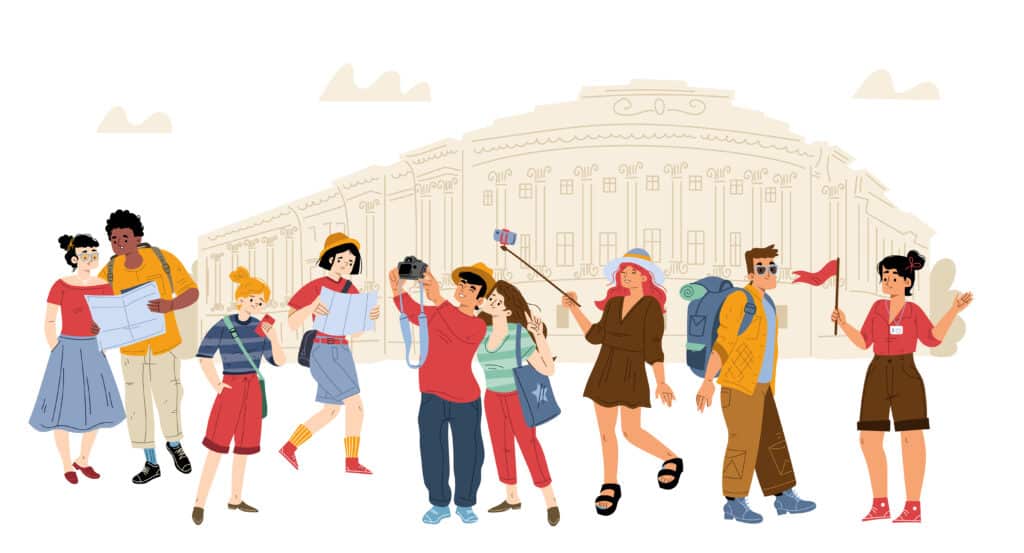
Cultural tourism is a multi-faceted industry that brings value to travellers in search of authentic experiences and to a myriad of stakeholders. From local communities to government bodies and from small businesses to environmental conservation efforts, cultural tourism can shape economies and lifestyles in both positive and negative ways. This guide delves into the key stakeholders in the cultural tourism sector, exploring their roles, impacts, and interconnected interests.
Tourists: The Heart of the Industry
Arguably, tourists are the backbone of cultural tourism. Whether they are history enthusiasts seeking out ancient ruins or gastronomes on the hunt for authentic local cuisine, tourists drive demand and shape the landscape of the tourism industry. They often seek enriching experiences that can offer a deep understanding of local cultures.
Local Communities: The Soul of the Destination
Local communities provide the lived experience that many cultural tourists seek. These people preserve the traditions, language, and heritage sites that form the basis of cultural tourism. Unfortunately, they can also bear the brunt of poorly managed tourism through cultural commodification and environmental degradation.
Government Bodies: The Framework Providers
Local and national governments play an instrumental role in regulating and promoting cultural tourism. They invest in infrastructure, enforce zoning laws, and facilitate public services like safety and sanitation that are vital to the tourism industry.
Tourism Boards and Agencies: The Promoters
Tourism boards, often funded by governments, are responsible for marketing a destination’s cultural assets to the world. These bodies work closely with other stakeholders to develop tourism packages, advertise local attractions, and even set guidelines for responsible tourism.
Tour Operators and Travel Agents: The Experience Curators
Specializing in delivering personalized experiences, these businesses are intermediaries between tourists and destinations. They can make or break the quality of the cultural tourism experience through their choices of local partnerships, itineraries, and guides.
Cultural Institutions: The Keepers of Heritage
Museums, art galleries, and historical sites are essential touchpoints for cultural tourists. They collaborate closely with various stakeholders to ensure that cultural assets are preserved and made accessible to the public.
Artisans and Performers: The Artistic Impressions
Artisans and performers add texture to the cultural fabric of a destination. These stakeholders benefit from increased visibility and economic opportunities , providing tourists a gateway to the authentic local culture.
Small Business Owners: The Local Economy Boosters
From restaurants and cafes to souvenir shops, small businesses see a surge in revenue when cultural tourism is thriving. They form a vital part of the local economy, providing services that enrich the tourist experience.
Academics and Researchers: The Thought Leaders
Cultural tourism is a field ripe for academic inquiry, touching upon anthropology, economics, and sociology disciplines. Research in this area can help shape policies that benefit tourists and local communities.
NGOs: The Advocates of Sustainability
Organizations that focus on cultural or environmental conservation often align with the interests of responsible cultural tourism. They act as watchdogs and advocates, ensuring that tourism practices are sustainable and ethical.
Real Estate Developers: The Infrastructure Builders
Though not directly related to the culture, real estate is essential in accommodating the influx of tourists, especially in booming destinations. They must balance business interests with responsible development.
Media: The Influencers
Media outlets, including travel bloggers and journalists, have a significant role in shaping public perception of a destination. Their storytelling can amplify the benefits or expose the pitfalls of cultural tourism.
The Environment: The Unspoken Stakeholder
Although not a traditional “stakeholder,” the environment stands to be significantly affected by tourism activities. Sustainable practices must be adopted to preserve the natural and cultural landscapes that attract visitors in the first place.
Understanding the intricate web of stakeholders in cultural tourism is the first step in creating an industry that benefits all. As cultural tourism evolves, stakeholders must actively dialogue to ensure sustainable and enriching experiences for everyone involved.
Cultural Tourism Experience
Cultural tourism experiences provide a unique opportunity for travellers to immerse themselves in the local culture, customs, and traditions of the places they visit. These immersive travel experiences enable tourists to understand the heritage and identity of the communities they encounter.
One popular way to experience cultural tourism is through homestays. These accommodations offer the chance to live with a local family, providing a firsthand glimpse into their daily lives and customs. The cultural exchange within a homestay environment can be transformative, offering insights that would otherwise remain veiled during a typical sightseeing vacation.
Another important aspect of cultural tourism is engaging with the local communities, participating in their events and festivals, and learning about their history and heritage through interactions with the people there. These experiences enable travellers to connect meaningfully with locals, fostering mutual appreciation and understanding of different cultures.
Cultural experiences often focus on different dimensions, such as:
- Arts and crafts: Exploring local artisans’ craftsmanship and heritage by visiting workshops, galleries, and markets.
- Cuisine: Sampling regional culinary specialities can offer a taste of local culture, traditions, and history.
- Religious sites: Visiting places of worship offers insight into the spiritual beliefs and practices of the area.
- Performing arts: Engaging with local music, dance, and theatre performances can reveal unique cultural perspectives and expressions.
Cultural tourism emphasizes responsible travel and encourages visitors to respect and appreciate the local customs, traditions, and the natural environment while exploring new destinations. Tourists can create unforgettable memories by connecting with people from different backgrounds and gaining a deeper understanding of their practices and values, fostering greater global empathy and cultural appreciation.
- EN - English
- PT - Portuguese
- ES - Spanish
- How it works
- Become a Host
- Download the app
Top Destinations
- United States
- United Kingdom
What type of experience are you looking for?
- Non-Profit School
- Permaculture project
- Eco Village
- Holistic Center
- Guest House
- How Worldpackers works

Learn from the most experienced travelers of the community
Traveling with worldpackers, planning and budgeting for travel, make a living while traveling as a lifestyle, travel with worldpackers.
- Using Worldpackers
- Work exchange
- Social impact
Plan your trip
- Women traveling
- Budget travel
- Solo travel
- Language learning
- Travel tips
- Get inspired
- Digital nomads
- Travel jobs
- Personal development
- Responsible travel
- Connect with nature
Top destinations
- South America
- Central America
- North America
- More destinations
- WP Life WP Life
- Exclusive discounts Discounts
What is cultural tourism and how to make it part of your trips
Learn all about cultural tourism and find out about amazing destinations to live cultural experiences around the world.
Worldpackers Worldpackers
Jan 08, 2024
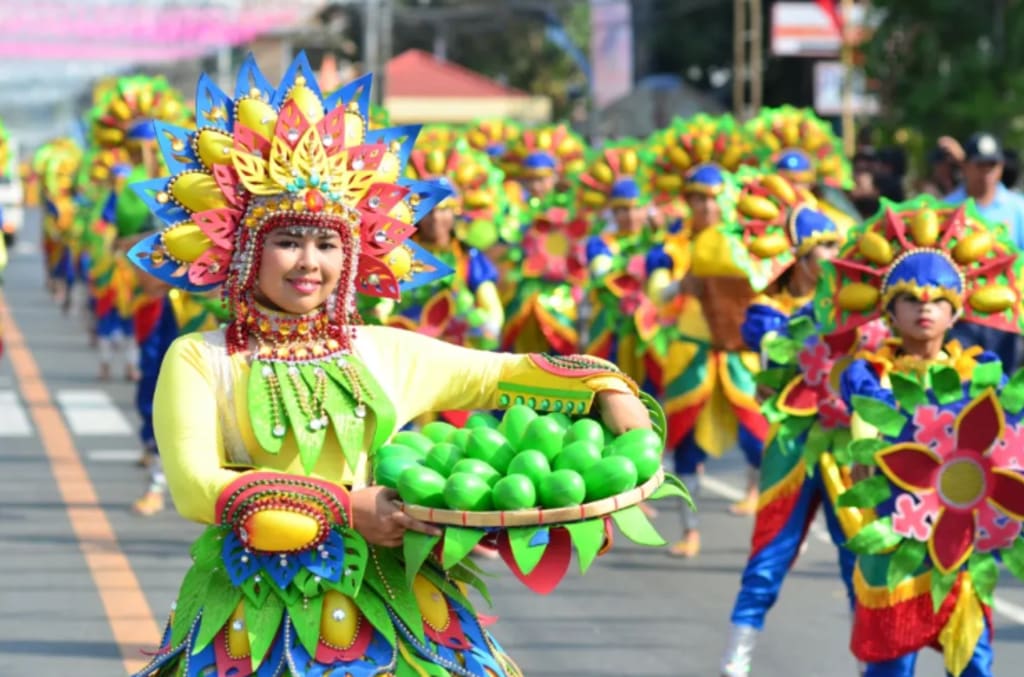
When you’re traveling, do you try to go beyond the surface and understand the different cultures that surround you? Then this article is for you. We will talk about the main characteristics of cultural tourism and will suggest 10 fascinating destinations with unique cultural aspects.
We will also tell you how you can have a deeper cultural immersion than a typical tourist , mixing with locals and learning from them while you get free accommodation.
You might also like to read:
- 20 ways to travel more intentionally
- 6 ways travel promotes learning and education
What is cultural tourism?
Cultural tourism is a form of travel that focuses on exploring and appreciating the unique traditions, history, and practices of a place . It is not just about visiting museums or attending festivals, but also delving deeply into the everyday aspects of local life. Authentic local food, local markets, and even casual chats with locals are an integral part of cultural tourism.
While a conventional tourist may seek relaxation and fun and focuses on visiting famous tourist places, the cultural tourist seeks to go beyond the superficial layer. They want to immerse themselves in local history, explore the unique customs of a region, and learn about its art and architecture. This type of experience is an opportunity to grow personally and empathize with people from different parts of the world.
Among the different types of cultural tourism, there are gastronomic tourism, rural tourism, religious tourism, ethnographic tourism, sports tourism, spiritual tourism, and voluntourism, to name a few.
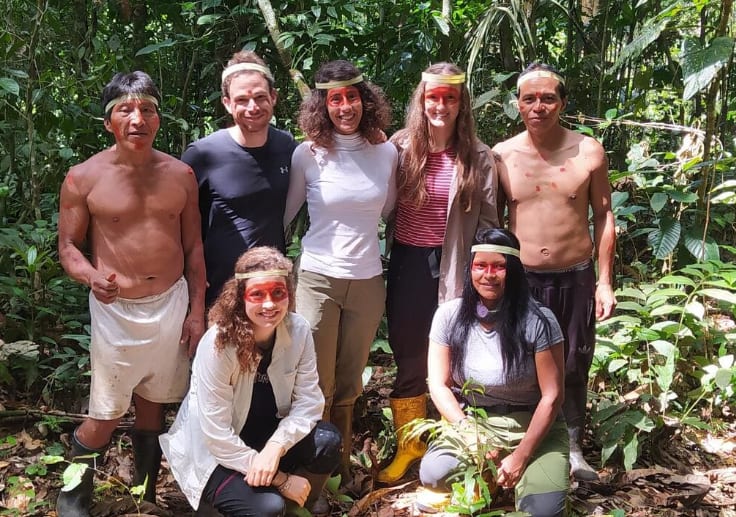
Characteristics of cultural tourism
A main characteristic of cultural tourism is the deep appreciation for different cultures . Travelers not only visit a place to see its natural or architectural beauties, but also to immerse themselves in its culture and understand it thoroughly.
Another important characteristic is the constant educational component that exists in this type of trip. You don't just learn about a new culture: you are also an active part of the cultural exchange while sharing your own customs and knowledge with local people.
Respect for cultural heritage is another indispensable condition for the cultural tourist, since not only the most famous tourist attractions are visited, but also places of great importance for local communities, such as natural sites with a strong mythology, ruins of ancient civilizations, or religious temples. They are spaces that house ancestral stories and traditions, which must be valued and preserved with the greatest care.
You might also be interested in: 5 actionable ways to live like a local while traveling
Importance of cultural tourism
Cultural tourism allows travelers to immerse themselves in the heart of a culture and learn about its history, customs, and traditions. But it's not just travelers who benefit from cultural tourism.
Local communities also have much to gain as this form of travel can be a powerful driver for local economic development. Income generated by tourism can be reinvested in community projects, helping improve infrastructure and boost local employment.
Role of the cultural traveler
When we embark on a cultural journey, we are much more than just passive spectators: we actively become respectful participants within these diverse communities. It is vital to understand that each culture has its own unique identity forged by centuries - sometimes millennia - of history.
As cultural travelers, our role is to learn and respect these differences. It is this open-mindedness that allows us to experience the intrinsic beauty of the varied ways in which humans interpret and express our existence .
Being a responsible tourist is central so that both parties can benefit from this exchange, since lack of respect or damage caused in the place visited can have irreparable consequences. Visiting a community with the sole objective of taking photos for social media, without being really interested in it, can ruin places in the long run.
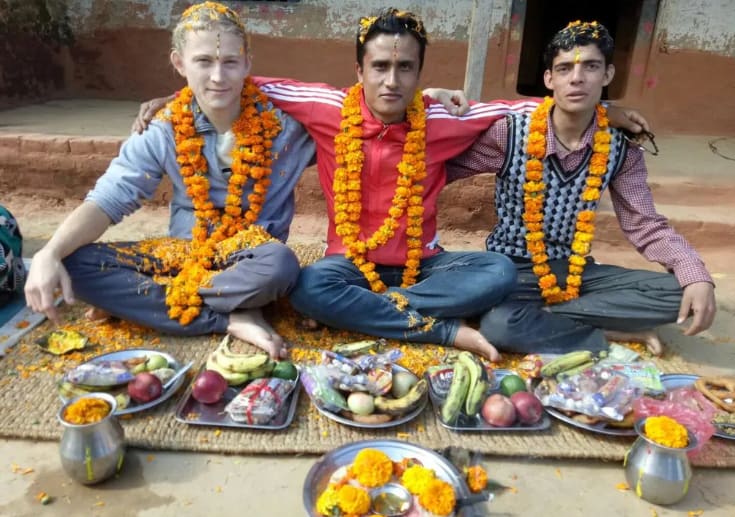
10 places where you can practice cultural tourism
Cultural tourism can be practiced anywhere in the world since there are countless diverse cultures all around us. As you travel you will realize that there are many more than you thought, because even within the same country there can be dozens or even hundreds of ethnic groups with their own religion, beliefs, mythology, dialect, gastronomy and so on.
Below we will see some of the most favorable destinations for cultural tourism, but obviously the choice of where to go depends on your interests.
Kyoto, Japan
Kyoto is known as the cultural heart of Japan. With its intact Shinto shrines and ancient Buddhist temples – such as Kinkaku-ji (the Temple of the Golden Pavilion) – Kyoto offers travelers an authentic glimpse into Japan's imperial past.
Don't forget to participate in a tea ceremony and stroll through Gion, a famous geisha neighborhood full of traditional houses where the maiko learn what is necessary to become geishas.
Keep reading about Japan:
- Japan off the beaten path: discover 6 unique non-touristy destinations
- Japan on a budget: live like a local and save your dollars
- How to teach English in Japan: the easiest way
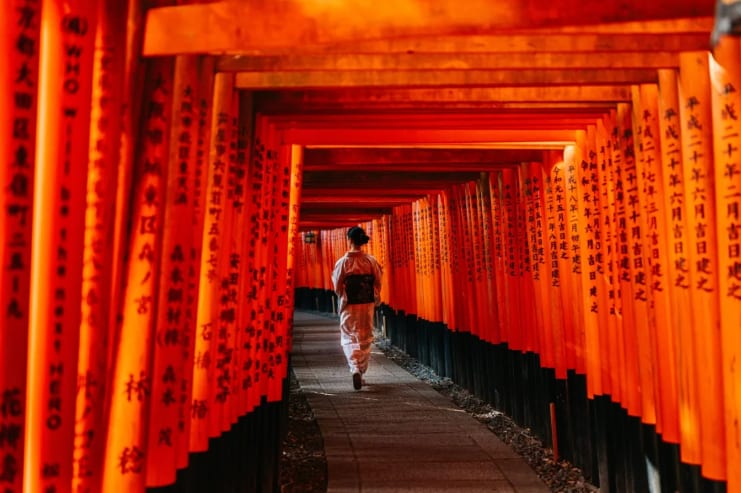
Ubud, Bali, Indonesia
Ubud is the cultural heart of Bali and a must-see destination for travelers looking to immerse themselves in the rich history and traditions of this mythical Indonesian island. This small town is surrounded by terraced rice fields, lush tropical forests and centuries-old Hindu temples that look like something straight out of a postcard.
Unlike the tourist bustle of Kuta, Canggu or Seminyak, Ubud offers a more authentic and immersive experience when exploring its surroundings. Here you can learn about Balinese customs, participate in craft workshops, or attend local cooking classes . In addition, its vibrant art scene will allow you to discover everything from traditional dances to contemporary art.
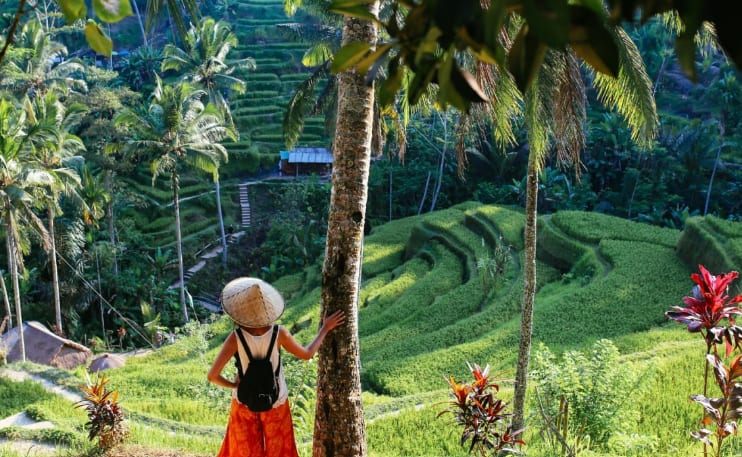
Dharamsala, India
Located in the northern region of India, Dharamsala is known for being the residence of the Dalai Lama and the center of the Tibetan government in exile . Here you can visit the Dalai Lama temple, where you can witness Buddhist ceremonies and better understand this ancient tradition.
Aside from its rich religious heritage, you will also find a fascinating mix of Indian cultures and Tibetan influences that are reflected in both local customs and cuisine. You can enjoy typical dishes such as momos (dumplings) or thukpa (a noodle soup), while interacting with the friendly locals.
Another must-see attraction is the Dhauladhar mountains that surround Dharamshala; perfect for those adventurers interested in hiking while enjoying spectacular panoramic views. There is also the unique opportunity to learn about traditional Ayurvedic medicine through educational workshops offered by local experts.
Keep reading: Discover India's top 3 best ecotourism destinations
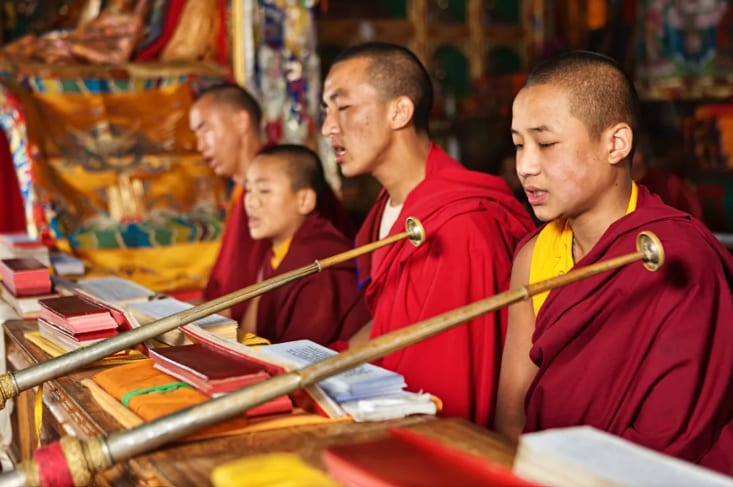
Marrakesh, Morocco
Marrakech, in Morocco , is famous for its medina or old town, declared a World Heritage Site by UNESCO. Here you can explore labyrinths of narrow alleys filled with colorful bazaars where local artisans sell their wares.
A visit to the imposing Bahia Palace or the Saadian tombs will transport you directly to Morocco's glorious past: it’s an impressive experience of cultural tourism.
You cannot miss the opportunity to try authentic Moroccan dishes , such as couscous or a delicious tagine while enjoying the lively and hypnotizing atmosphere in Jemaa el-Fna, one of the largest and busiest markets in the world.
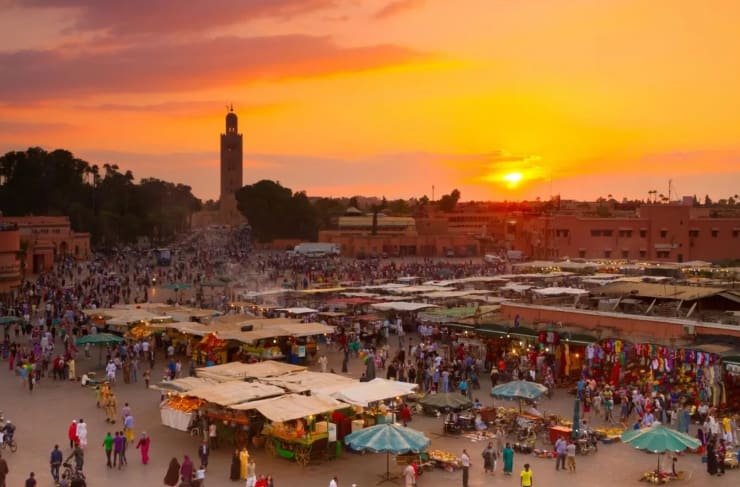
Istanbul, Turkey
Istanbul is an ideal destination for cultural tourism. This magical city is located at the crossroads between Europe and Asia, giving it a unique mix of Eastern and Western influences.
Its ancient history has left tangible traces that you can explore during your visit. From architectural wonders such as the Blue Mosque, the Topkapi Palace or the majestic Hagia Sophia to its bustling bazaars full of colors, aromas, and unique flavors.
Turkish culture has a lot to offer: its rich gastronomy with emblematic dishes such as kebab or baklava; its impressive ancestral religious traditions such as that of the dancing dervishes; and its palpable modernity in vibrant neighborhoods like Beyoğlu where contemporary art galleries coexist with bohemian cafes.
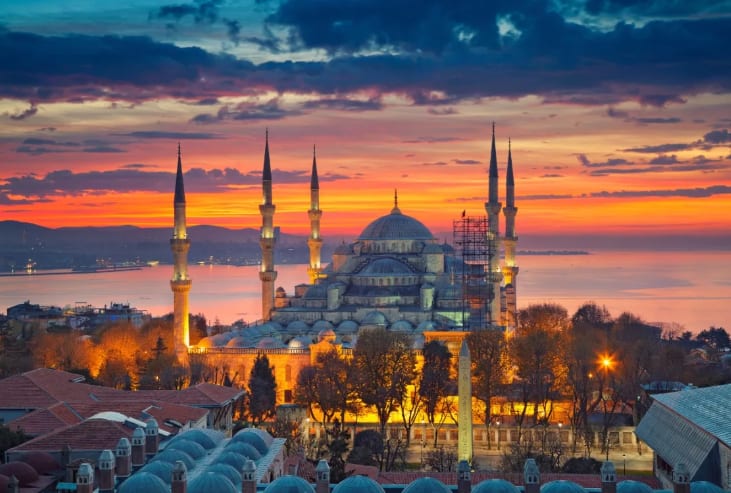
Rome, Italy
Rome, the "Eternal City", is a living museum. From the Colosseum to the Vatican, every corner tells a fascinating story about ancient Roman civilization and its impact on our society today, making it a classic destination for cultural tourism.
You can tour the ancient ruins of the Roman Forum and admire masterpieces of Renaissance art at the Vatican Museums. Every step through Rome allows you to immerse yourself deeply in its vibrant culture and rich history.
Keep reading : The 20 best places to visit in Italy
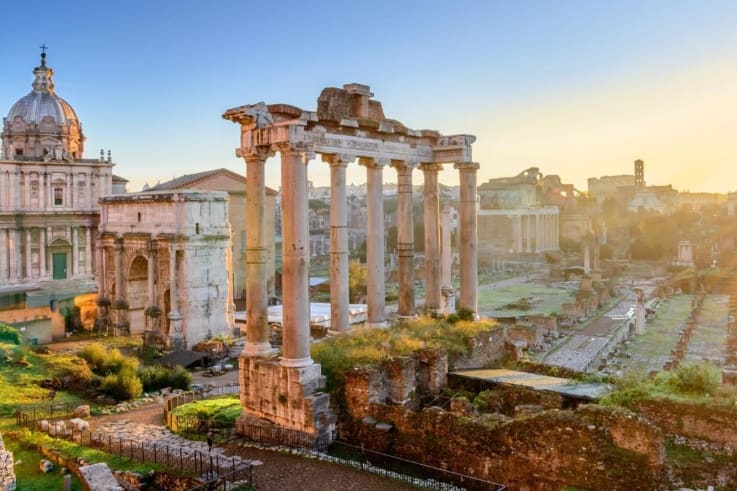
Granada, Spain
Known for its stunning Moorish architecture and charming cobblestone streets, Granada is another perfect destination for travelers looking to have a cultural tourism experience in Europe.
This Andalusian city, in the South of Spain, lies at the foot of the Sierra Nevada mountains and offers a unique mix of Moorish and Christian influences.
The Alhambra, a jewel of Islamic art with its intricate mosaics and hanging gardens, is its main tourist attraction, but there is much more in Granada. The UNESCO World Heritage neighborhood of Albayzín is full of winding streets where you can browse local shops or simply enjoy the panoramic views from one of the many viewpoints.
You also can't miss Sacromonte, famous for its gypsy caves converted into houses and even flamenco bars. Here you can experience an authentic flamenco nigh t, full of the passionate rhythm that characterizes this traditional dance from southern Spain.
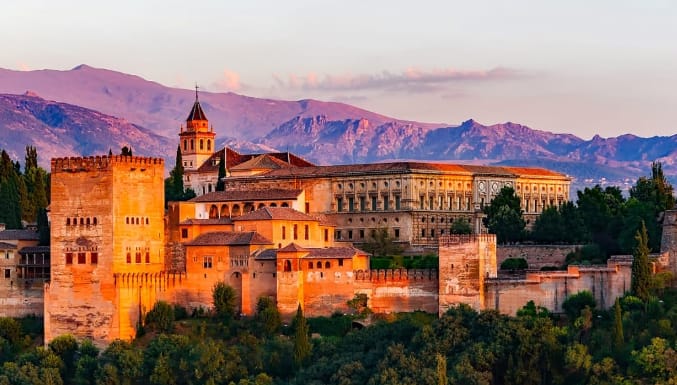
Salvador de Bahia, Brazil
Salvador is the capital of the state of Bahia and the fourth most populated city in Brazil . Founded in 1549 by the Portuguese, it was the most important center in the slave market, which over time led to an artistic culture where African expressions mixed with European and Indigenous influences.
No wonder it is one of the country’s most popular tourist destinations: it combines beautiful beaches with history, festivals, and traditions , being considered the cultural capital of Brazil.
Pelourinho is the old neighborhood of Salvador de Bahía, declared a World Heritage Site. Its cobbled streets are full of historical sites, colonial architecture, museums, restaurants, bars, hotels, musicians, and capoeira.
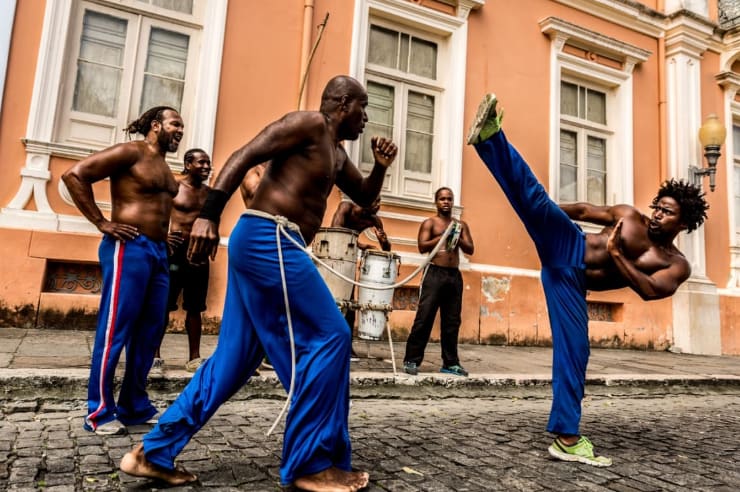
Cusco, Peru
The charm of Cusco, Peru , lies in its rich history and culture that have survived through time. This ancient Peruvian city is another perfect destination for travelers interested in cultural tourism in South America.
As the cradle of the Inca Empire, Cusco offers an unmatched experience. Here you can explore ancient Inca ruins such as the famous citadel of Machu Picchu, a must-see for any history and archeology lover.
You can also visit other historical sites such as Sacsayhuamán or Pisac. And if you are looking to immerse yourself even more in the local culture, there is nothing better than trying the exquisite Andean cuisine and participating in its colorful traditional festivals.
In addition to being a living museum full of archaeological treasures, Cusco is also known for its vibrant nightlife with numerous bars and clubs where you can enjoy folk music while mingling with locals and other international travelers.
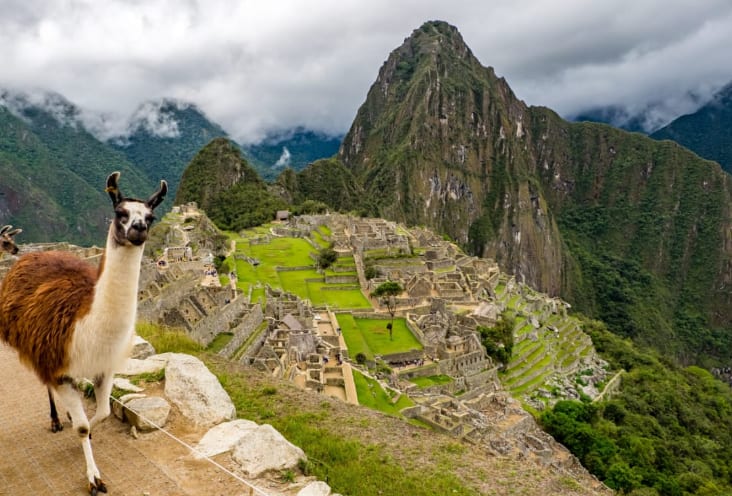
Guadalajara, Mexico
This vibrant city, known as the birthplace of mariachi, is full of history, traditions and art that reflect the richness of Mexican culture . You can stroll through the local squares where mariachi groups perform regularly or visit the famous Degollado Theater during one of its nightly shows.
But the cultural wealth of Guadalajara goes far beyond mariachi. The towns near this metropolis are famous for their impressive craft production . Tlaquepaque and Tonalá are two perfect examples: these places are full of workshops where you can watch artists work with clay, blown glass, and other ancient techniques to create wonderfully detailed pieces.
Guadalajara also offers a wealth of cultural and historical museums, as well as well-preserved colonial buildings that tell the history of Mexico . You cannot miss visiting the Hospicio Cabañas, an architectural jewel from the 19th century and a UNESCO World Cultural Heritage Site.
In addition, the city is surrounded by agave plantations, the plant that is used to produce tequila and mezcal.
You might also like : Ul timate list of the best places to visit in Mexico: the top 13
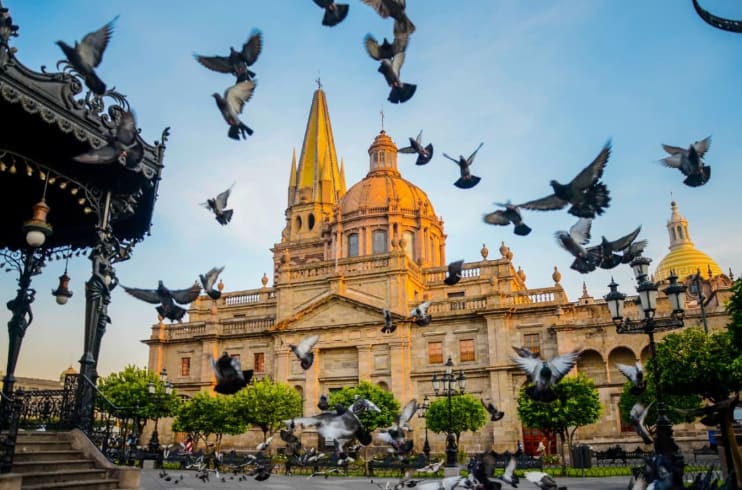
Discover different cultures with Worldpackers
An excellent way to have a true cultural immersion in the places you travel is by volunteering through Worldpackers . This platform facilitates an exchange of work for accommodation which allows for transformative and budget-friendly trips.
It’s quite simple: you lend a hand in different projects for a few hours a day , and in return you get free accommodation on site. Depending on the host, you might also get other benefits such as free meals and activities.
This type of trip is super cheap, but that’s not the best part. Volunteering with Worldpackers you can meet many people with similar interests to yours and develop new skills, such as learning a language , bartending, or bioconstruction.
From hostels in big cities to organic farms and holistic centers surrounded by nature , the possibilities are plenty. There are positions available in all of the countries mentioned in this article and much more: there are more than 140 countries available on the platform.
Keep reading :
- Collaborative tourism: what are collaborative travel relationships?
- 6 types of volunteer work abroad that give you free accommodation
- How to find volunteering opportunities around the world using Worldpackers
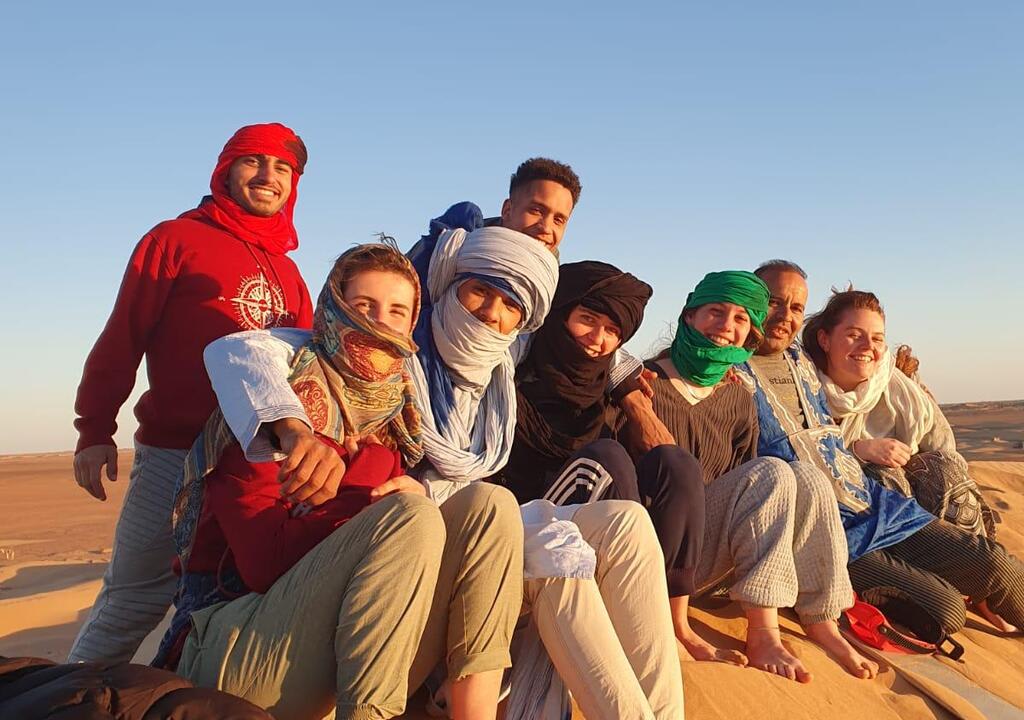
Did that spike your interest? Create a free profile on Worldpackers and start saving your favorite volunteering positions. And if you liked these tips on how to practice cultural tourism around the world, let us know in the comments section below!
Join the community!
Create a free Worldpackers account to discover volunteer experiences perfect for you and get access to exclusive travel discounts!
Worldpackers Editorial
Worldpackers.
The safest community to travel, volunteer and make a positive impact in +140 countries.
Be part of the Worldpackers Community
Already have an account, are you a host, leave your comment here.
Write here your questions and greetings to the author
Great trip!
More about this topic

What is cultural exchange and how to experience it?
The sustainable plate: tracking the origins of organic food.
Two Brothers
Volunteer trips: transform your life & impact, how do worldpackers trips work.
As a member, you can contact as many hosts and travel safely as many times as you want.
Choose your plan to travel with Worldpackers as many times as you like.
Complete your profile, watch the video lessons in the Academy, and earn certificates to stand out to hosts.
Apply to as many positions as you like, and get in contact with our verified hosts.
If a host thinks you’re a good fit for their position, they’ll pre-approve you.
Get your documents and tickets ready for your volunteer trip.
Confirm your trip to enjoy all of the safety of Worldpackers.
Have a transformative experience and make a positive impact on the world.
If anything doesn’t go as planned with a host, count on the WP Safeguard and our highly responsive support team!
After volunteering, you and your host exchange reviews.
With positive reviews, you’ll stand out to hosts and get even more benefits.
Cultural tourism
- Living reference work entry
- Later version available View entry history
- First Online: 01 January 2015
- Cite this living reference work entry

- Shinji Yamashita 3
237 Accesses
Cultural tourism is a program in which tourists appreciate tangible and intangible aspects of culture at a given destination , from architecture , visual arts, dance performances, festivals, cuisines, to history . In recent years, it “has become an umbrella term both to identify specially organized culture-based tourism experience and to provide unity and add depth to a diverse range of culture-related aspects of tourism more generally” (Craik 1997 : 118).
In discussing the relationship between tourism and culture, however, the former is often viewed negatively as destroying local cultural resources through the process of commoditization (Greenwood 1989 ). As Greenwood himself admits, this view is not necessarily accurate, for tourism is not the only factor affecting host societies. Industrialization, urbanization, and mass media also have an impact . Furthermore, cultural and economic realms are deeply intermingled in the contemporary world. Therefore, what is crucial is not whether...
This is a preview of subscription content, log in via an institution to check access.
Access this chapter
Institutional subscriptions
Craik, J. 1997 The Culture of Tourism. In Touring Cultures: Transformations and Theory, C. Rojek and J. Urry, eds., pp.113-136. London: Routledge.
Google Scholar
Greenwood, D. 1989 Culture by the Pound: An Anthropological Perspective on Tourism as Cultural Commoditization. In Hosts and Guests: The Anthropology of Tourism (2 nd Ed.), V. Smith, ed., pp.171-185. Philadelphia: The University of Pennsylvania Press.
Harrison, D., and M. Hitchcock, eds. 2005 The Politics of World Heritage: Negotiating Tourism and Conservation. Clevedon: Channel View.
Hitchcock, M., and N. Darma Putra 2005 The Bali Bombings: Tourism Crisis Management and Conflict Avoidance. Current Issues in Tourism 8:62-76.
Article Google Scholar
Lanfant, M. F., J. Allcock, and E. Bruner, eds. 1995 International Tourism: Identity and Change. London: Sage.
Yamashita, S. 2003 Bali and Beyond: The Exploration of the Anthropology of Tourism. Oxford: Berghahn.
Yamashita, S. 2010 A 20-20 Vision of Tourism Research in Bali: Towards Reflexive Tourism Studies. In Tourism Research: A 20-20 Vision, D. Pearce and R. Butler, eds., pp.161-173. Oxford: Goodfellow.
Download references
Author information
Authors and affiliations.
Department of Cultural Anthropology, The University of Tokyo, 3-8-1 Komaba, Meguro-ku, Tokyo, Japan
Shinji Yamashita
You can also search for this author in PubMed Google Scholar
Corresponding author
Correspondence to Shinji Yamashita .
Editor information
Editors and affiliations.
School of Hospitality Leadership, University of Wisconsin-Stout, Menomonie, Wisconsin, USA
Jafar Jafari
School of Hotel and Tourism Management, The Hong Kong Polytechnic University, Hong Kong, Hong Kong SAR
Honggen Xiao
Rights and permissions
Reprints and permissions
Copyright information
© 2014 Springer International Publishing Switzerland
About this entry
Cite this entry.
Yamashita, S. (2014). Cultural tourism. In: Jafari, J., Xiao, H. (eds) Encyclopedia of Tourism. Springer, Cham. https://doi.org/10.1007/978-3-319-01669-6_45-1
Download citation
DOI : https://doi.org/10.1007/978-3-319-01669-6_45-1
Received : 24 June 2014
Accepted : 24 June 2014
Published : 14 September 2015
Publisher Name : Springer, Cham
Online ISBN : 978-3-319-01669-6
eBook Packages : Springer Reference Business and Management Reference Module Humanities and Social Sciences Reference Module Business, Economics and Social Sciences
- Publish with us
Policies and ethics
Chapter history
DOI: https://doi.org/10.1007/978-3-319-01669-6_45-2
DOI: https://doi.org/10.1007/978-3-319-01669-6_45-1
- Find a journal
- Track your research
- Switch skin
What is Cultural Tourism and Why is It Important?

Tourism trends come and go. What was once deemed as a necessity in travel and tourism may not be a necessity today. So what is cultural tourism and why is it important? Let’s dive in!
How is Culture Defined?
In order to understand cultural tourism, we must first understand what constitutes culture.
Culture is rooted in many complexities and many inner workings. On the surface level, culture can be defined through symbols, words, gestures, people, rituals and more.
However, the core of culture is in its values.
The way a culture perceives itself or stays preserved is through a set of shared values.

Maybe its an ode to ancestry and tradition or a new breadth of
However, the core of culture is in its values.
Whether it’s an ode to ancestry or creating a new set of values as time evolves, it can be also be held true to the
Whether it’s an ode to ancestry or creating a new set of values as time evolves, cultural tourism is uprooted in holding and preserving cultures through traditions and heritage. [1]
What is Cultural Tourism?
Adopted by the UNWTO General Assembly in 2017, Cultural Tourism is defined as the following: “A type of tourism activity in which the visitor’s essential motivation is to learn, discover, experience and consume tangible and intangible cultural attractions/products in a tourism destination.”
The main aim of cultural tourism is to improve the quality and livelihood of the local people who are committed to preserving cultural heritage and traditions.
This can be through the purchase of locally made goods, initiatives through local food and the learning of recipes,
This can be through the purchase of locally made goods, initiatives to learn how to cook local recipes and supporting local inbound operators who have a good knowledge of the cities they are operating in.
This can be done through the following six aspects:
- Handcrafted Goods and Visual Art
- Social Practices
- Rituals and Festive Events
- Oral Traditions
Imagine visiting one of our destinations: Jordan, Tunisia, Kyrgyzstan, Uzbekistan or Tanzania.
Imagine being able to experience all six of these aspects of cultural tourism all created in one package.

Where Can You Practice Cultural Tourism?
Jordan .
From the North to the South, Jordan’s landscapes and its people are ready to welcome you to each and every experience.
In the North, experience the gastronomy of locally preserved recipes and take your hand at being able to learn how to cook yourself.
Take your hand at handcrafted goods like making baskets out of wheat straws or learn the art of traditional weaving in Madaba.
In the South, practice in rituals in the desert by learning about the infamous Bedouin tea, take some words and practices that are so pertinent to those in the South.
See our packages in Jordan
Underground colonies, history and a rich culture are just waiting for you to learn about.
Visit an artist in Gabes who has taken traditional methods of papermaking and carried it to the present today by honoring raw and organic materials pertinent to the atmosphere of Tunisia’s landscape.
Then have an opportunity to stay in local accommodation in underground colonies which stay cool during the summer and warm in the winter.
You can also experience Amazigh history and the different languages present in Tunisia today that trace back to civilizations many years ago.
See our packages in Tunisia
Uzbekistan
One of Central Asia’s unknown wonders
Uzbekistan is located on the Silk Road and holds centuries of history that trace back to the Islamic Golden Age. It holds a unique architectural background and since it holds history between the Persian Empire and the Soviet Union, you can see a contradiction between both styles, all in one place.
See our packages in Uzbekistan
Kyrgyzstan
Where nature is a non-negotiable
With its beautiful nature, with over 2,000 lakes, Kyrgyzstan is another Central Asian wonder that holds beautiful fairytale naturescapes and semi-nomadic living.
Kyrygz people still adhere to ancient civilizations and honor their ancestors by living in Yurts and sharing natural practices such as horseback riding and traditional old games, like Kok Boro and eagle hunting.
See our packages in Kyrgyzstan
Everything is “pole pole” in Tanzania
From visiting indigeneous tribes to participating in rituals to mother nature, Tanzanian people practice the “pole pole” lifestyle, which means slowly slowly in Swahili.
With an intersection of different cultures and practiced rituals, Tanzania has become such a hub for many people to get together and enjoy the lifestyle and indigenous cultures.
See our packages in Tanzania
Why is Cultural Tourism Important?
Cultural tourism is a travel and tourism trend that is here to stay. With more and more accessibility to the world and the people in it, there is peak interest in being able to immersively travel.
- Peaks an interest to immerse yourself in a particular culture
- Creates meanings, stories and understanding between host and guest
- Share cultural practices and be part of the preservation of cultural heritage
- Gain a full understanding a culture without commodification
What better way to honor a destination than by practicing in allowing something to be immortal.
Also, if you’re interested in learning more about experiential tourism, check out this article.
What are some cultural touristic experiences you are looking forward to trying?
Best Beaches in Zanzibar That You Have To Visit
10 benefits of traveling alone you should know, we have all of your questions answered to kyrgyzstan hiking and trekking, 10 tips to make you a smart traveler in 2022, what does it mean to be a responsible tourist in 2022 and how to become one, viet food: get to know vietnamese traditional food, top 10 places to go in the winter, what are the best times to visit jordan, related articles.

10 Things to Do in Vietnam: From Food to Adventure

Best Tourist Places in Sri Lanka You Need to Visit!

UN Tourism | Bringing the world closer
Share this content.
- Share this article on facebook
- Share this article on twitter
- Share this article on linkedin
Preserving Cultural Identities for the Future of Tourism
- All Regions
- 13 Dec 2019
Kyoto (Japan), 13 December 2019 – The World Tourism Organization (UNWTO) and the United Nations Educational, Scientific and Cultural Organization’s (UNESCO) Fourth World Conference on Culture and Tourism spotlights the added value of culture for destinations and focuses on the future sustainability of cultural tourism.
Over the past two days in Japan’s capital of culture, delegates debated how to keep the appreciation of heritage and contemporary cultural expression at the heart of tourism for generations to come. Intercultural dialogue, local communities and innovative measurement systems are at the core of the conference conclusions laid down in the Kyoto Declaration.
UNWTO Executive Director Manuel Butler said: “When managed responsibly cultural tourism can enrich the lives of both travelers and residents, promoting diversity and intercultural dialogue. The Kyoto Declaration will help us to ensure that our world’s rich heritage and diverse creativity are wonders that our children too will have the chance to discover for themselves"
UNESCO Deputy Director General, Mr. Xing Qu, added: “The international community needs to seize the benefits of connecting culture and tourism as global forces that bring people together. UNESCO is pleased to be partnering with UNWTO in this venture as we look to deepen and widen our collaboration.”
Responsible practices were at the forefront of the solutions put forward by leading experts in the field, such as including the local population at every level of cultural tourism development and using new technologies to sustainably manage visitor flows and the equal distribution of tourism benefits.
Kyoto City’s Mayor, Mr. Daisaku Kadokawa, presented the ‘Kyoto Model’ to representatives from over 50 countries across the world as a means of effectively striking the right balance between marketing cultural heritage and preserving it for future generations.
UNWTO also launched the ‘UNWTO Recommendations on Sustainable Tourism Development of Indigenous Tourism’ during the conference that were compiled in close consultation with indigenous entrepreneurs, advocates and representatives.
The recommendations provide guidance on developing sustainable and responsible operations to indigenous communities that want to open up to tourism development or improve the existing tourism experiences their communities offer.
Notes to the Editor
The 2019 UNWTO/UNESCO World Conference on Culture and Tourism is the fourth edition of the conference with previous editions held in Istanbul, Turkey in 2018, Muscat, Oman in 2017 and Siem Reap, Cambodia in 2015. The fourth edition is kindly hosted by the Japan Tourism Agency, the Japanese Agency for Cultural Affairs, Kyoto Prefecture and Kyoto City.
Related Links
- Kyoto Declaration EN
- Déclaration de Kyoto FR
- 4th UNWTO/UNESCO World Conference on Tourism and Culture
- UNWTO Recommendations on Sustainable Development of Indigenous Tourism
- UNWTO Global Code of Ethics for Tourism
- Declaración de Kioto sobre turismo y cultura: invertir en las futuras generaciones
Related Content
Un tourism and icca partner around sustainable developm..., un tourism launches women in tech startup competition: ..., un tourism joins launch of ireland’s first sustainable ..., un tourism: putting communities at the centre of touris....

- Division of Arts and Culture
The Division of Arts and Culture promotes arts and culture as essential to quality of life for all Floridians.
Para español, seleccione de la lista
- Department of State
- Info and Opportunities
Resources by Topic
- Cultural Tourism Toolkit
- What is Cultural Tourism? - Basic Information
What is cultural tourism?
According to the United Nations World Tourism Organization, cultural tourism is “movements of persons for essentially cultural motivations such as study tours, performing arts and cultural tours, travel to festivals and other cultural events, visits to sites and monuments, travel to study nature, folklore or art, and pilgrimages.”
We expand this definition to encompass the participation of visitors in cultural activities whether those activities are the primary purpose of their travel or not.
Why should my organization take action on cultural tourism?
Cultural tourism is big business in Florida. Our state attracts more than 100 million visitors per year, and 65% of those visitors take part in at least one cultural activity.
These visitors spend more on their trips and stay longer than other visitors.
Creating a plan to attract cultural tourism can do more than affect your bottom line, it can also help define your area as a cultural and artistic destination.
Why would a visitor come to my area?
Travelers look for an “authentic experience,” and your community has its own special attributes that set it apart from others. These features include your history, traditions, and yes, your arts and culture.
Your community has a story to tell, and finding an engaging way to tell that tale is one way to attract visitors. Tools are available for creating an inventory of community assets. A few of them are found as links in this toolkit.
Where to begin?
That’s up to you! Engage with other organizations and individuals in your area, or simply measure the effect visitors have on your own organization. The important thing to do is to start somewhere . You don’t even have to spend any money.
How do I approach my local Destination Marketing Organization (DMO)or Convention & Visitors Bureau (CVB)?
Sometimes arts and cultural organizations may be daunted at the idea of approaching the local DMO or CVB. Arts and cultural organizations create value for tourists by offering experiences that cannot be found elsewhere.
You have a product that your DMO can sell… and their goal is to sell your area to visitors. You may find that showing them how many visitors take advantage of your services will catch the DMO’s interest. You may find that the excellent quality of your work will excite them as much as you know it will excite tourists. Finding your way in may be difficult, but it can be done.
Remember, bring them a quality product and show them how they can use it to their own advantage.
Another helpful step is to integrate the boards of directors of DMO/CVB’s with the boards of arts and cultural organizations. If a member of the DMO board is interested in arts and culture, there may be an opportunity for expanding their interest by having a conversation regarding an upcoming project or event.
In addition, if you have someone from the tourism industry on your board, they may be able to provide some useful guidance and new ideas for promoting cultural tourism in the community.
What can I measure that relates to cultural tourism?
You can always start small in measurements. Try collecting the zip codes of your patrons as a way to find out how many of them traveled to your event or activity. Think of what you want to accomplish, and ask yourself some important questions:
“Why do we do what we do?”
“Why do people take advantage of my current offerings?”
“For what reasons are we funded?”
“What change are we trying to create in our community?”
These questions and others like them can help you decide what to measure and how to measure it.
Once you have your numbers, analyze them and look at how you can improve what you’re doing.
Once you’ve implemented a change, no matter how small, measure again to see if you’ve achieved the outcome you wanted.
- Accessibility
- Artist Estate and Legacy Planning
- Arts in Education
- Arts in Health
- Economic Impact of the Arts
- Emergency Preparedness and Recovery
- Cultural Tourism Funding Resources
- Directory of Florida Direct Marketing Organizations (DMOs)
- Arts & Culture Event and Calendar Websites in Florida
- Useful Links

Ron DeSantis, Governor Cord Byrd, Secretary of State
- Privacy Policy
Questions or comments? Contact Us Submit a public records request.
Under Florida law, e-mail addresses are public records. If you do not want your e-mail address released in response to a public records request, do not send electronic mail to this entity. Instead, contact this office by phone or in writing.
Copyright © 2024 State of Florida, Florida Department of State.
Florida Department of State Phone: 850.245.6500
R.A. Gray Building 500 South Bronough Street Tallahassee, Florida 32399-0250
Wander-Lush
World’s Best Cultural Tourism Destinations: 30 Cultural Trips to Take This Year
Discover the best cultural trips and immersive travel experiences our world has to offer. From Southern India to the High Arctic, here are the top 30 countries and regions for cultural tourism this year .
With many of us now on the lookout for deeper and more meaningful travel experiences , cultural tourism – travel that prioritises learning about and appreciating different ways of life – has never been more appealing.
Immersive cultural experiences give travellers an opportunity to see the world from a different perspective, form meaningful relationships, and develop new skills. They can also open the door to a slower, more sustainable type of travel that has benefits for local communities and a lighter impact on the planet.
Whether you’re a seasoned cultural traveller researching for your next trip or you’re interested in getting off-the-beaten-track but aren’t sure where to start, I hope this guide to culture and travel offers you some food for thought!
I also suggest reading these tips for socially responsible travel for advice about engaging with different cultures in a sensitive and mindful way.
Please note: This post contains affiliate links, meaning I may earn a commission if you make a purchase by clicking a link (at no extra cost to you). Learn more.
This post may contain sponsored links for which I received compensation.
What is cultural tourism?
Cultural travel is as broad and multifaceted as culture itself – it’s difficult to pin down, and highly subjective. For me, cultural tourism is a kind of travel that prioritises activities and experiences designed to immerse you in a way of life that differs from your own.
It might involve consuming tangible cultural products (museums, archaeological sites, food , tea ) or encountering intangible cultural elements (rituals, performances, processes). As well as art, literature, religious monuments and the like, it also encompasses ways of living, values and beliefs – both historical and contemporary.
It’s almost impossible to avoid local culture when you travel. No matter your motivation, it’s inevitable that you’ll end up experiencing some aspect of local culture, even if it’s something as simple as eating local cuisine or learning a few words of the language.
Apart from these incidental encounters, cultural tourism represents a more concerted effort to engage with local culture through specialised activities. In the same way an adventure traveller might seek out a particular hiking route, for example, a cultural traveller might plan their trip around a festival.
Cultural vacations might involve:
- Learning a new skill, for example through a cooking class or craft workshop
- Attending a local festival or event
- Participating in a ritual or ceremony
- Eating local food
- Staying with a family at a homestay
- Immersing yourself in the local community by teaching English as a foreign language
- Visiting a community-based tourism project
- Visiting World Heritage Sites and immersive museums
- Taking a locally guided tour
There’s lots more to cultural trips (as you’ll soon see), but these are some of the common elements we tend to associate with this genre of travel.
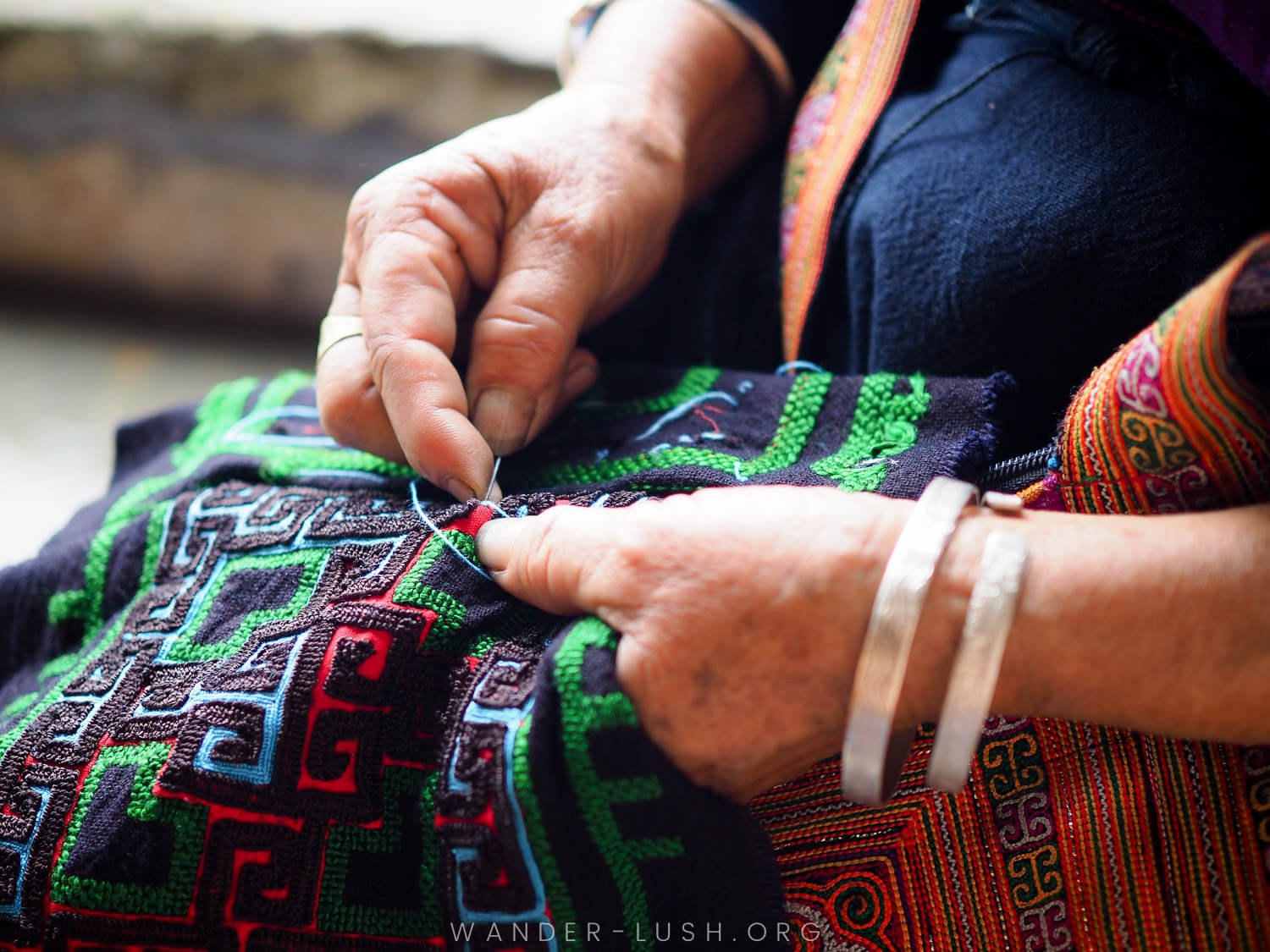
Pros and cons of cultural travel
Cultural travel is almost a guaranteed way to enrich your experience as a tourist. But it’s worth noting that this type of travel has both benefits and downsides for host communities.
Cultural tourism helps to encourage the preservation of culture and heritage by keeping endangered traditions alive. There might be little demand for heritage handicraft skills, for example, but outside interest (and an opportunity to earn an income) could be enough to safeguard a tradition that might otherwise have been lost.
By the same token, cultural tourism can incentivise better protections for physical heritage sites, ensuring that monuments and the like remain accessible for future generations. Cultural tourism can have far-reaching social impacts and environmental benefits when it gives rise to new social enterprises, local businesses and women-led ventures geared towards giving tourists an immersive experience.
On the other hand, there’s always a question mark around authenticity when it comes to cultural travel. If a ritual is performed for the benefit of outsiders, does it lose its meaning? Commodification of culture for tourism is a serious issue that impacts many communities and can be damaging to social and economic development more broadly.
Cultural tourism often involves travelling to more remote areas, which introduces a whole host of other pros and cons. A road constructed for the benefit of tourists is also new infrastructure for the community – but it might speed up globalisation and cultural erosion, while the very presence of tourists can worsen environmental pollution or cause rifts between different social groups.
These are complicated issues. Personally, I think cultural exchange is one of the most important aspects of travel and when managed properly and in a way that actively involves communities, the benefits can outweigh the drawbacks.
Top 30 countries & regions for cultural trips
There’s not a town, city, county or region in the world that doesn’t have something amazing to offer in terms of local culture. This makes it very hard to pick the ‘best’ places for cultural tourism.
However, each of these 30 hand-picked destinations stands out for its extravagant festivals and celebrations, rich cuisine and heritage handicrafts that give travellers a window on culture, heritage and the local way of life.
At the end of the list, you’ll find my top tips for having a more culturally immersive travel experience no matter where in the world you go.
Cultural destinations in the Americas
Antioquia Department, Colombia • Cuba • Ecuador • Big Island of Hawaii, USA • Orleans Parish, USA • Oaxaca, Mexico
Colombia’s Antioquia Department – for pueblos, bandeja paisa & Botero
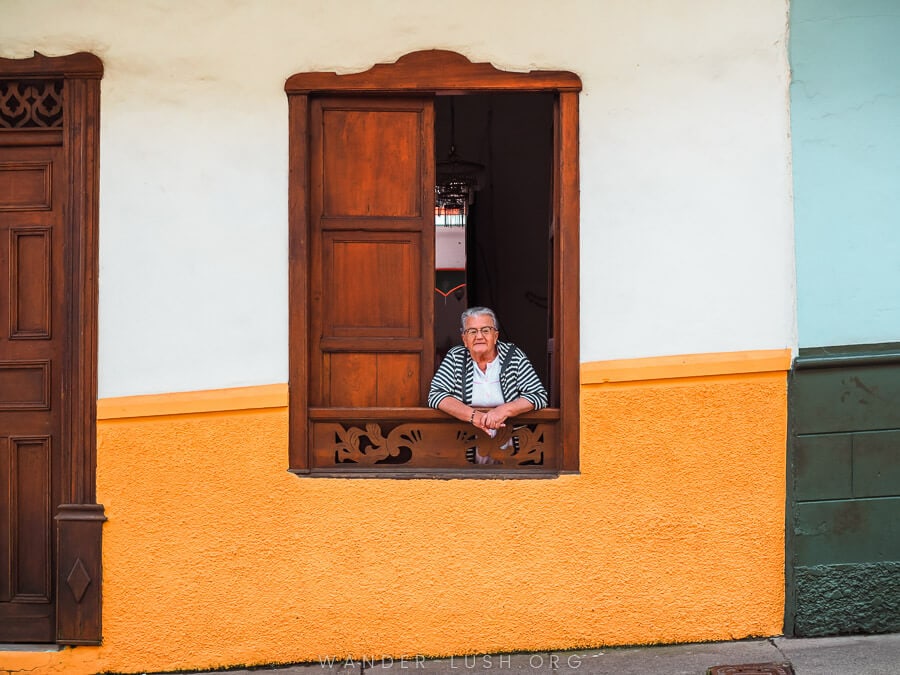
A melange of Indigenous traditions and colonial influences, there are few destinations in the world more culturally vibrant or intriguing than Colombia.
Antioquia Department in the north-west – with the city of Medellin as its capital – has become one of the most popular destinations in the country for tourists, beloved for its exquisite landscapes, colourful small towns and coffee farming heritage.
Along with several other departments, this part of Colombia is home to the Paisas , a self-defined cultural group whose name is derived from a Spanish word meaning ‘countryman’. They speak their own dialect, eat their own cuisine, and pass down their culture through a rich tradition of music and folklore.
Modern-day Antioquian culture is defined by the region’s artists, writers and poets. And then there’s the city of Medellin itself, which has undergone a huge transformation in recent years and is now considered one of the country’s main cultural hubs.
Top cultural experiences in Antioquia
Eat Paisa cuisine: One of the biggest joys of visiting Antioquia is experiencing the food scene. Paisa cuisine is heavily influenced by the topography and way of life in the Colombian Andes – carb-heavy dishes that feature beans, rice and maize are designed to fuel bodies for back-breaking work on the land. Bandeja Paisa is by far the most popular traditional dish and a must-eat in Medellin. The Antioquian version of a ploughman’s lunch, it consists of carne asada (grilled steak), chicharrón (crispy pork rind), rice and red beans served with a slice of avocado, fried plantains, a fried egg and a corn arepa on the side. It’s not for the faint hearted!
Visit a pueblo : Colombia is renowned for its small towns with colourful painted facades and pretty flower boxes. Antioquia is home to some of the loveliest pueblos in the country, including Jardin , Jericó and Santa fe de Antioquia, to name but a few. Developed during Spanish times, most follow the same basic town plan: A public square, a market, a church, and rows and rows of houses built in the region’s vernacular style. If you’re short on time, Pueblo Paisa in Medellin is a model village in the heart of the capital.
Shop at the San Alejo Handicraft Market: If you happen to be visiting Medellin on the first Saturday of the month, don’t miss this unique opportunity to see Colombia’s handicraft traditions on display. Vendors from across the region descend on the city to sell traditional products, including woven Wayuu bags, and artisanal foods. You can chat to the vendors and watch live demonstrations to see how these Indigenous handicrafts are produced.
Visit Comuna 13: A locally guided tour of Medellin’s Comuna 13 will allow you to delve into the city’s tumultuous recent past in a respectful and mindful way. This collection of once-notorious city neighbourhoods has become a symbol for the nation’s transformation and cultural revitalisation. Street art, music and other expressions of local creativity are all on display for visitors to enjoy.
Cuba – for Mambo, classic cars & casas particulares
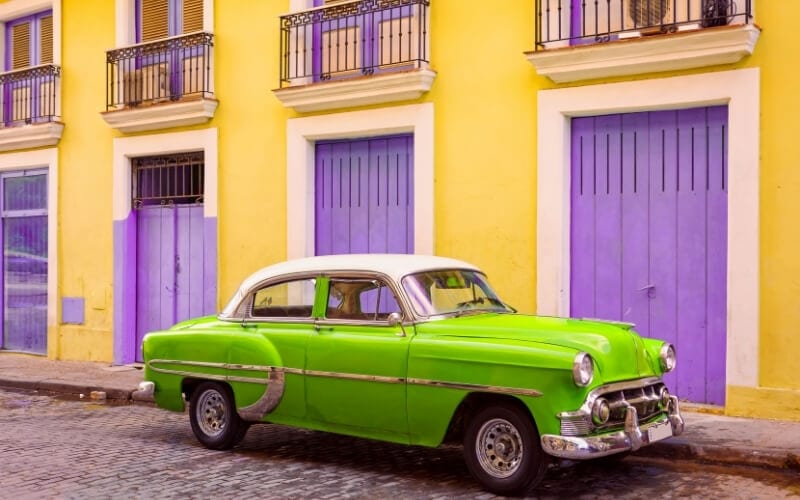
The native Taino Indians called their beautiful island Cubanacán. When the Spaniards arrived in 1511, they shortened it to ‘Cuba’ and claimed it for Spain, labelling it “the most beautiful land human eyes have ever beheld.”
Ethnically, the country is a vibrant mix of Europeans, Africans brought over as enslaved workers throughout the 1700s, and a large group of Chinese imported as indentured servants. Sadly, the original inhabitants have largely disappeared.
On December 31, 1959 the Cuban Revolution succeeded in converting the country into a communist nation. Since then – and due to the mutually adversarial relationship with the United States – the island nation has existed in semi-isolation, frozen in time.
The cars that roam the streets are the same classic American models from the 1950s, and the frequently crumbling buildings have enjoyed little renovation.
Despite Cuba’s trying history, the spirit of the people lives on and in its rich and celebrated culture. Before you go, learn the dos and don’t of visiting Cuba .
Top cultural experiences in Cuba
Dance the night away at a musical venue: Cuba is the birthplace of dozens of musical genres including Mambo, Cha-Cha-Cha and Afro-Cuban Jazz. These Afro-European genres have contributed and enriched music categories around the world. Be sure to experience one of Cuba’s world-famous carnivals and Jazz Festivals.
Overdose on art and architecture: With nine UNESCO World Heritage sites and an amazing collection of museums, Cuba is a culture vulture’s paradise. Most are found in the capital city of Havana, but you also find little gems in the second city, Santiago de Cuba, and the perfectly preserved colonial city of Trinidad. Cuba’s architecture ranges from Spanish colonial and French Baroque to 1920s Art Deco. Visit the Museum of Fine Arts in Havana and the Bacardi Museum in Santiago to start; but don’t miss the quirky Rum Museum or the delectable Museum of Chocolate either.
Stay at a Cuban homestay: These Airbnb-type experiences are called ‘ casas particulares ‘. This is your opportunity to live with a Cuban family and delve into the culture.
Go hiking: Cuba’s national parks, biosphere reserves and 1,500 miles (2,400km) of coastline provide an opportunity to experience the outdoor culture.
By Talek from Travels With Talek
Ecuador – for jungle homestays, festivals & colada morada

A country with just over 17 million people, Ecuador is an extremely culturally diverse nation and a cultural tourism destination that should not to be overlooked.
Retaining a strong influence from Spanish colonisation, with widely-celebrated Catholic festivals and traditions, there is also a diverse mix of Andean Indigenous groups and traditions that dominate the mountainous centre of the country. In the east, the influence of various Amazonian Indigenous groups and their traditions is strong.
The coast of Ecuador, meanwhile, is marked by African influence from the cultures of enslaved peoples brought during colonisation.
With such a diversity of cultures – each with their own festivals, traditional foods and more – there are plenty of immersive experiences to partake in across the country that make a trip to Ecuador a must for any cultural traveller.
Top cultural experiences in Ecuador
Visit a remote community in the Amazon rainforest: One of the most popular and fascinating cultural experiences for travellers to Ecuador is to visit an Indigenous community to learn about and experience the rich traditions. Even a jungle tour of the Amazon on a budget can be tailored to include a visit to an Indigenous community, where you’ll learn to make traditional dishes and beverages such as chicha . Tribes deeper in the Amazon that welcome visitors often offer more in-depth cultural experiences including homestays, ritual cleansings, or even ayahuasa retreats.
Celebrate Easter in Ecuador: In addition to the Indigenous traditions in Ecuador, there are many popular celebrations from the Catholic tradition that travellers can partake in. Easter celebrations during Holy Week include Quito’s parade, known as the Procesión Jesús del Gran Poder, which features thousands of purple-hooded devotes carrying crosses and statues. Make sure you enjoy a bowl of traditional Fanesca , a rich and creamy soup made with 12 grains representing the 12 Disciples.
Dress up for Día de los Difuntos : Another cultural celebration with Indigenous roots is the Día de los Difuntos or ‘Day of the Deceased’, marked on November 2nd. Ecuador celebrates by honouring the dead and visiting cemeteries. Celebrations also include preparing and eating guaguas de pan , bread in the shape of a baby filled with fruit jam, and drinking colada morada , a thick, sweet drink made with berries and fruit and thickened with blue corn flour before being served warm. These delicious treats are sold in bakeries across the country for at least a month prior to the festivities. The largest celebrations are held in Indigenous communities such as Otavalo in Northern Ecuador.
By Carley from Home to Havana
The Big Island of Hawaii – for palm weaving, stargazing & petroglyphs
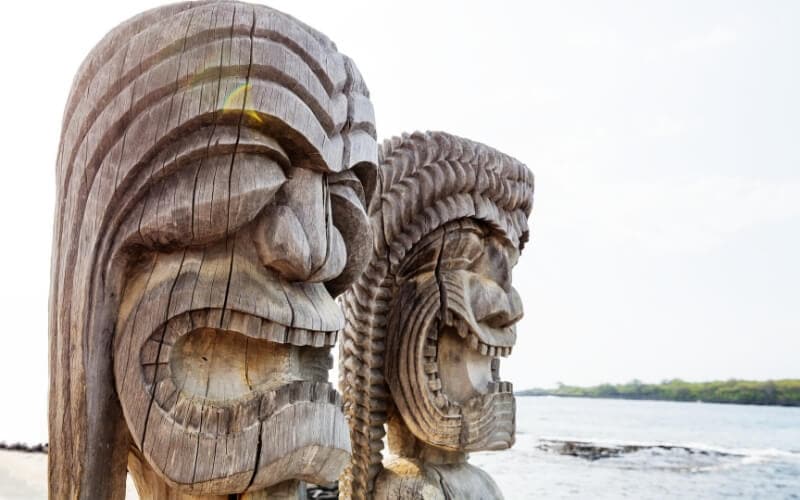
The natural abundance of the Big Island of Hawaii, the largest island in the Hawaiian archipelago, is nothing short of spectacular. With eight different climate zones, three active volcanoes, and the most mesmerising waterfalls and beaches in different shades, there’s a wealth of diversity to explore on the Big Island .
This unique natural setting is also home to several important cultural sites. After all, this is the Hawaiian island where the first Polynesian settlers arrived, where the first ruler of the Kingdom of Hawaii, King Kamehameha the Great, was born, and where the European explorers first arrived.
With such a rich heritage, it comes as no surprise that Hawaiian culture is still very much alive on the Big Island. Here are some experiences that allow you to explore the island’s heritage.
Top cultural experiences on the Big Island of Hawaii
Take a self-guided tour of the Pu’uhonua o Hōnaunau National Historical Park: Just south of Kailua-Kona, there’s a site where the royal family and their warriors once lived. It’s very well preserved and you can still see the thatched huts, an ancient temple, wooden carvings and fishponds. But this site was more than just a royal retreat: When Hawaiians broke the law or kapu , they were condemned to death. The only option to escape their fate was reaching this sanctuary, known as the Place of Refuge. You can visit this intriguing site on a self-guided tour.
Learn the traditional Hawaiian art of weaving palm fronds: In the Hawaiian craft known as lau niu , the leaves of the coconut palm were used to thatch roofs, create baskets and even hats. There’s a handful of workshops where you can learn this traditional craft from a professional weaver. Not only does it make for a unique experience, it also allows you to craft your own handmade Hawaiian souvenir.
Go stargazing at Maunakea: In Hawaiian culture, the dormant Maunakea volcano, with its unique alpine Lake Waiau, is considered sacred. They believed the summit to be the realm of the gods and the meeting place of earth and sky. To this day, cultural rituals are performed on the slopes of Maunakea. This intriguing volcano is home to the world’s largest astronomical observatory, the Onizuka Center for International Astronomy, which hosts a regular stargazing program.
Check out the Hawaiian petroglyphs: Hawaiian petroglyphs tell the stories of ancient times and give a unique inside into the different cultural beliefs on the islands. You can find carvings of canoes, turtles, babies and more at one of the petroglyph sites that dot the Big Island, such as the Puuloa Petroglyph site in Hawaii Volcanoes National Park or the Puako Petroglyph Archaeological Preserve near the Mauna Lani Resort.
Conquer the ocean in an outrigger canoe: Step aboard a double-hull outrigger canoe and explore the shore in the same way the Polynesian settlers did centuries ago. This type of canoe features lateral support floats or outriggers fastened to one or to both sides of the hull. Learn how to paddle and work as a team as you glide along the Kona reefs teeming with fish. If you’re lucky, you might even spot a pod of dolphins.
By Sarah from CosmopoliClan
Orleans Parish – for jazz, Madi Gras & creole cooking
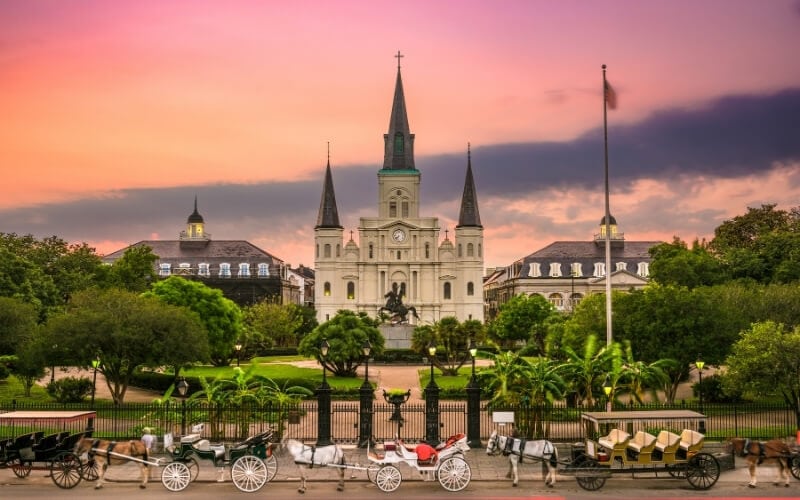
When it comes to cultural destinations, few cities have as much to offer as New Orleans and the surrounding parishes. Located in Southeastern USA, New Orleans is all about tradition and culture. The city’s unique heritage comes from a blend of French, Spanish, Cajun, and Creole cultures.
Combined, these groups have given birth to something truly iconic. The beautiful Mardi Gras celebrations are a remnant of the French colonial era, while the beautiful Spanish colonial architecture in Jackson Square is worthy of a walking tour .
You will also find unique Cajun cuisine served in the city’s most popular restaurants. Add in the many historical museums, southern plantation homes, and distinct architectural styles and Orleans Parish makes for the ultimate cultural destination in the US.
Top cultural experiences in New Orleans
Join a Mardi Gras parade: New Orleans is well-known for its lavish and grand Mardi Gras parades and balls. Visitors can enjoy the festivities for an entire month in the lead up to the big day. Outside of Mardi Gras, there are plenty of other festivals in New Orleans to check out as well.
Listen to jazz: New Orleans is the birthplace of jazz. The city’s Creole population gathered and celebrated in the city’s Congo Square on Sundays and thus jazz was born!
Tour a plantation home: Many southern plantation homes are located along the banks of the Mississippi. These can be seen on a road trip along the Great River Road. On a tour, you will learn about pre-Civil war life in the South and the history of slavery. Learn more about the ethics of visiting plantation homes here .
By Ketki from Dotted Globe
Oaxaca – for Indigenous cuisine, Zapotec rugs & mezcal
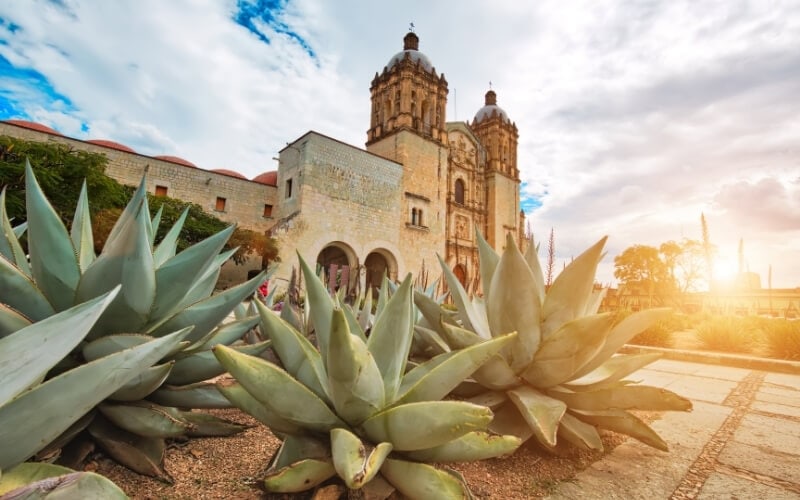
The state of Oaxaca is a cultural hub in Mexico. Void of resorts or even big-name hotel chains, Oaxaca is rich in flavourful cuisine, celebrations, and Indigenous revitalisation.
Located in southern Mexico, Oaxaca features a variety of different landscapes, from lush hills and forests, to dry arid deserts and blissful beaches. However, the community atmosphere of Oaxaca is what keeps people coming back, both international visitors and Mexican residents alike.
Oaxaca is known as the food capital of Mexico, with dozens of celebrity chefs. Notably, Indigenous culture is very visible in Oaxaca, with 16 recognised Indigenous groups in the state. Zapotec weaving is one of the most sought-after souvenirs in the area – and Mexico in general – and it comes from Oaxaca.
Top cultural experiences in Oaxaca
Celebrate Dia de los Muertos : Oaxaca City is a top destination for Dia de los Muertos (Day of the Dead), with its dazzling parades, intricate family altars and abundant festivities. Dia de los Muertos is a pre-Columbian tradition that honours deceased loved ones with food, drink, and merriment. So, if you happen to visit Oaxaca during a festival like Dia de los Muertos, bring comfortable shoes for fun activities throughout the day. Oaxaca City is an extremely walkable city, and you will want to explore every inch of its mural lined walls.
Eat Oaxacan cuisine: Since Oaxacan cuisine is also central to the region’s identity, sign up for a food tour with a local to learn the origins of some of the most popular dishes and what makes Oaxacan food and flavour so unique and different from other states in Mexico. Or, if you want to take a more hands-on approach, take a cooking class with a world-class chef at Casa de los Sabores and learn how to make mole and other Oaxacan staples.
Visit a Zapotec village: If you’d prefer to focus on Indigenous cuisine, take a day trip out to the Zapotec village of Teotitlán del Valle for a cooking class at El Sabor Zapoteco . After you finish, there are many things to do in Teotitlán del Valle , but you will probably want to get your fill of shopping at the many boutique shops for best quality Zapotec rugs.
Drink mezcal: If you’re a fan of hard drinks, Oaxaca is a great destination for mezcal tasting! Hop on any tour and view the vast agave fields as you taste mezcal throughout the day. Depending on the season, you may even get to try your hand at using the harvesting machete!
By Kay from The Awkward Traveller
Learn more: A local’s guide to the best of Mexican culture and an in-depth guide to Mayan culture in the Yucatan .
Cultural travel destinations in Europe
French Basque Country • Armenia • Sicily • Greece • Bosnia & Herzegovina • Russia • Northern Europe’s Arctic Regions • The Greater Caucasus • Andalusia, Spain
French Basque Country – for frontons , fêtes & espadrilles

The Basque country at the southwestern-most tip of France is one of those regions you might not guess is French – at least not at first.
The half-timbered houses are painted oxblood or green, and the Euskara (Basque) language, Europe’s oldest, is related to no other tongue. The Basques are also among the oldest ethnic groups of Europe.
Basque culture is unique and is spread among seven provinces, of which three are in France (the other four are in Spain). The Basques have their own festivals, music and dances, their own foods, games and folklore, as well as an acute sense of history and heritage.
Top cultural experiences in French Basque Country
Here are just a few cultural experiences to whet your appetite for all things Basque!
Gastronomy: The food is different from your regular French fare. For example, the Espelette pimento is spicier than seasonings you’ll find elsewhere in France, and food itself is taken to new heights here – the region has the highest number of Michelin stars per capita in the world. And let’s not forget the pintxo , the Basque equivalent of the Spanish tapas.
Fronton s: You’ll find one of these walls in every Basque village – it’s what Basques use to play their national sport, Basque pelota (known in some countries as jai alai). It’s played with a racquet-like bat which scoops up the ball. Then, a bit like squash, the players fling it back and forth against the wall, or fronton.
Family-owned businesses: Basque artisanal traditions run deep, whether it’s leatherwork, espadrilles, Basque linen or beret making. This is a region in which hand-made goods thrive and where mass-production takes a back seat. The local government makes sure family businesses are promoted and Basque know-how exported, however stiff the competition – there are special labels for family businesses, and even labels for those businesses that have been around for more than a century (and there are plenty). As a result, hand-made goods from this small region find their way around the world, symbolising not only Basque savvy but Basque determination to hang on to its heritage.
Bayonne Festival: With its one million annual participants, the Fêtes de Bayonne is France’s largest festival. It was ‘borrowed’ in 1932 from not-too-distant Pamplona in Spain, but has grown immeasurably since. Each July, visitors dress up in white clothes and red scarves (and a red beret, of course) and spend five days eating, drinking, singing Basque songs and watching Basque sports. The Festival includes bullfighting, which has a long tradition in the region, although this particular sport might be short-lived given the growing opposition to it.
By Leyla from Offbeat France
Bosnia & Herzegovina – for old bazaars, woodcarving & kahva
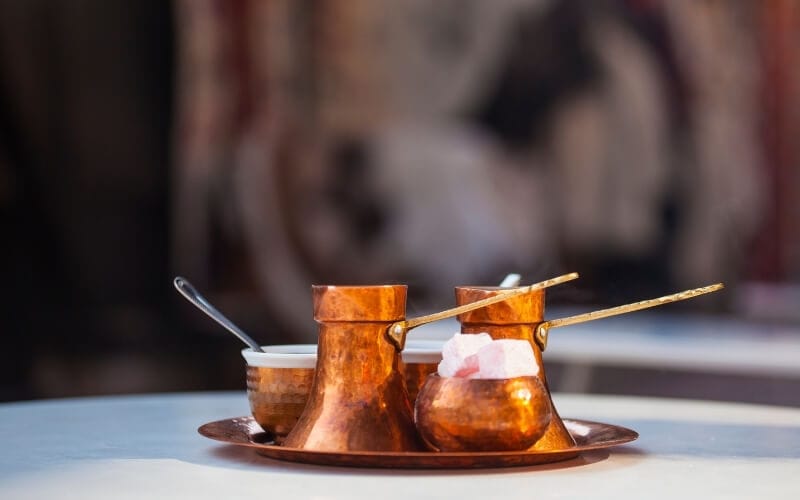
Bosnia and Herzegovina is one of the most culturally and ethnically diverse countries in the Balkans . If you have your sights set on this lesser-visited part of Europe for your next cultural trip, it’s the perfect setting to learn about the region’s different – often competing – influences and how they’ve shaped modern life.
Bosnia is the original cultural melting pot, and Sarajevo is where it all comes to a head. The city is divided into two parts – Ottoman and European – with the sprawling Old Bazaar on one side, and the Austro-Hungarian planned portion of the capital on the other. A plaque on the pavement marks the spot where East Meets West.
But the boundaries aren’t always that clear. Bosnia and Herzegovina’s character is a combination of Bosnian, Serb and Croat, layered with Jewish, Romanian, Albanian and Turkish traditions. The vignette of a mosque’s minaret and a church bell tower rising up side by side is a perfect motif for the country’s diversity.
Top cultural experiences in Bosnia & Herzegovina
Explore Sarajevo’s Old Bazaar: One of the most beautiful Ottoman bazaars in the region (and there are a lot), just wandering the rows of picturesque wooden shops connected by cobbled streets – the sound of coppersmiths beating intricate designs onto plates ringing in your ears – is a completely immersive experience. At the kafane coffeehouses, where kahva and rakia are served with much pageantry, you get a feel for famous Bosnian hospitality.
Take a food tour of Sarajevo: Bosnians are fiercely proud of their national cuisine. Dishes such as burek (filled savoury pastry) and cevapi are a common ground and bring the country together. A food tour of Sarajevo takes you behind the scenes on some of the city’s liveliest markets and busiest restaurants while giving you an insight into the history behind some of the country’s most iconic dishes.
Visit a woodcarving master in Konjic: Sarajevo in particular has an incredibly rich art and literature scene, as evidenced in the many festivals that take place in the city throughout the year. Bosnia’s heritage handicrafts shine a light on the culture of craftsmanship that has bestowed the country with so many beautiful landmarks over the years. Woodcarving has been practiced for generations in the city of Konjic and today, visitors can tour the masters’ workshops for an up-close encounter.
See the Stećci Medieval Tombstone Graveyards: Stećci medieval tombstones were laid during the time of the Bosnian Kingdom. Recognised as a UNESCO World Heritage Site, they’re found throughout the territory including in forests close to the border with Serbia . Carved from limestone, the Stećci contain motifs and inscriptions and provide a rare window onto this epoch of the country’s history that’s still shrouded in much mystery.
Greece – for markets, mythology & Orthodox Easter
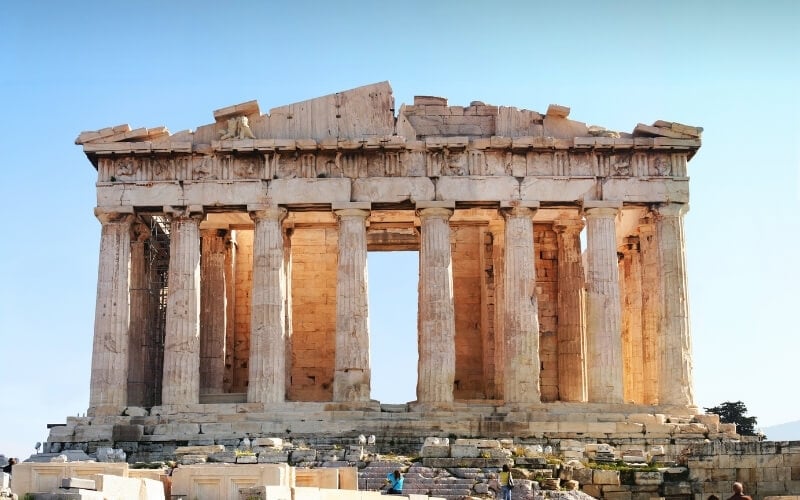
Greece is a country rich in culture, from the legacy of ancient history and mythology to traditional cuisine and celebratory festivals that still bring people together to this day. Greek nationals tend to be very proud of their history and culture , which can be seen in the well-executed museums, galleries and archaeological sites throughout the country.
Believed to be the ‘birthplace of Western civilisation’, Greece is known for its scholars, medics, architects, philosophers and politicians that shaped the way the world works today. This makes the country an excellent choice for cultural tourism as there are simply so many things to see and do that will both satiate your wanderlust while also teaching you new things.
Whether you’re interested in archaeological excavations, gastronomic tours, local festivals or ancient architecture, Greece certainly has you covered.
Top cultural experiences in Greece
Take a Mythology Tour of Ancient Athens: Athens has a whole host of archaeological sites to explore , from the Ancient Agora and Hadrian’s Library to the world-famous Acropolis and Parthenon perched on a hillside overlooking the city. One of the best ways to discover these sites is via a Mythology Tour that takes you around the best historic monuments and ruins while also giving you interesting information about the city and country’s history and mythology. This tour , suitable for all ages, gives you skip-the-line access to some of Athens’ most important landmarks along with an experienced guide to give you detailed history about how Greece became the centre of the world.
Visit the Athens Central Market: If your idea of cultural tourism involves food, you might be interested in a trip to the Athens Central Market and a local cookery class. A gastronomic experience allows you to soak up the sights and smells of the city’s biggest market, picking up local produce and souvenirs while also trying some tasty titbits along the way . You’ll then take your purchases back to the kitchen where you’ll cook up a storm using local recipes and techniques. Try classics like Dolmades (stuffed vine leaves), Tzatziki and Spanakopita (spinach and feta pies) to give you a real taste of traditional Greek cuisine.
Attend the Epidaurus Festival: The Ancient Theatre of Epidaurus, a grand amphitheatre located on the bank of the Acropolis Complex, runs an annual summer festival of art. The festival combines modern and traditional music, theatre and dance with the picturesque Ancient Greek setting, making it a real highlight for any traveller. Over the years, the Epidaurus festival has played host to names like Frank Sinatra, Maria Callas and Luciano Pavarotti.
Celebrate Orthodox Easter in Greece: Easter is one of the biggest traditional festivals on the Orthodox calendar, so no matter where you are in Greece during this time, you’re sure to come across some pretty exciting celebrations! One destination that always enjoys epic Easter festivities is the island of Corfu. Local Easter traditions begin on Palm Sunday (a week before Easter) and there are different festivities each day leading up to the main event.
Palm Sunday sees a large procession of the Holy Shrine; Monday, Tuesday and Wednesday see locals preparing their Easter meals and sweet specialities, going to evening ceremonies and lighting up the town with lanterns; Maundy Thursday is egg-painting day; Good Friday features the mournful marches of the philharmonic orchestra and the procession of epitaphs; Good Saturday features an artificial earthquake(!), bell ringing, the throwing of clay pots and tossing coins into a barrel; and the whole week culminates on Easter Sunday with a celebration of the Resurrection of Christ – fireworks, marches, music and traditional family meals galore!
By Chrysoula from Athens and Beyond
Learn more: 7 awesome cultural activities in Athens .
Russia – for ballet, banyas & borscht
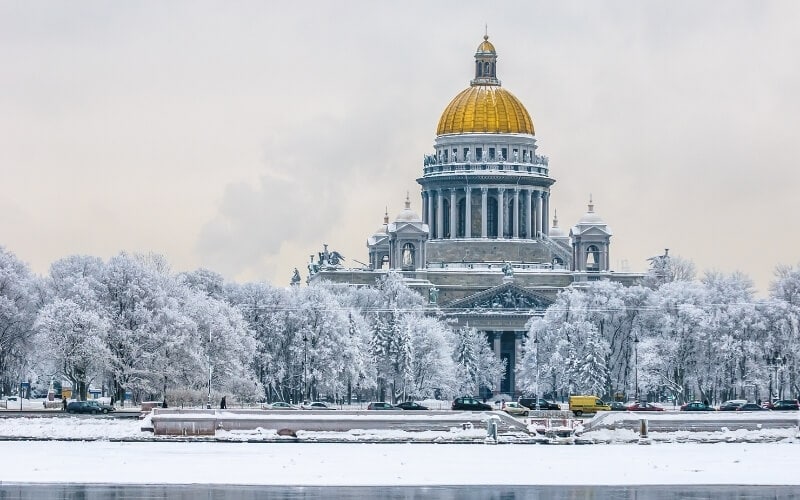
While many may think of Russia as cold and grey, this could not be further from the truth. From the famous colourful onion domes of St. Basil’s Cathedral to the gilded fountains of the Peterhof Palace, Russia’s beauty is undeniable.
Russia is also a country rich in culture and filled with literature, ballet, painting and classical music.
Top cultural experiences in Russia
To really delve into Russian culture, there are a few experiences you should have whilst here.
Experience a Russian banya : One of the best cultural experiences you can have in Russia is to visit a banya . A banya is similar to a sauna. The biggest difference, though, is that a banya has high levels of humidity, while a sauna usually has dry air. They’ve been a part of Russian life for over a thousand years! You wear funny felt hats to protect your hair and ears from the heat. This also helps to regulate your body temperature, so you are able to sit in the banya for a longer period of time.
Another interesting aspect of the Russian banya is ‘flogging’ using birch twigs ( venik ). This is supposed to benefit your health and improve your immune system, and honestly, if you have someone who knows what they are doing, it does feel really good!
After you’ve gone in and out of the banya a couple times, you then cool yourself off by taking a quick, cold shower, jumping into a cold pool or tub (banyas do have these), jumping into a snowbank (seriously). Or… You can just jump in a frozen lake!
See a ballet at the Bolshoi: Seeing a ballet at the Bolshoi Theatre is one of the best things to do in Moscow and all of Russia in general. Even though ballet did not originate in Russia, Russian ballet is world-renowned, and the locals are incredibly proud of the tradition. If you can, try to see a performance of The Nutcracker or Swan Lake on the historic stage. Tickets sell out very quickly, so don’t delay in purchasing them once they go on sale!
Experience NYE: New Year’s Eve is the biggest holiday in Russia. This is because Christmas was forbidden during the Soviet years. Many traditions were moved from Christmas to the New Year, including keeping presents under the Christmas tree and visits from the Russian equivalent of Santa. Celebrations and fireworks take place across the country on December 31 – the biggest and most famous displays are in Moscow’s Red Square and Gorky Park.
Sample Russian cuisine: No trip to Russia would be complete without experiencing the local cuisine. The best Russian food and drinks to sample on your visit are: Pelmeni (a Russian dumpling filled with meat and usually topped with sour cream); borscht (a traditional Russian soup whose main ingredient is beetroot); beef stroganoff (a Russian dish made with sautéed beef in a sauce with smetana ); syrniki (essentially a cottage cheese pancake topped with jam or sour cream – SO good!); kvass (a fermented beverage made from rye bread); and caviar and vodka (alas, you can’t come to Russia and not try caviar and vodka!)
By Lindsey from Have Clothes, Will Travel
Northern Europe’s Arctic Regions – for reindeer & Sami traditions

In Europe’s high northern reaches, you will find one of the continent’s oldest and most distinct cultures, the Sami. Spread across the Arctic regions of Norway, Sweden, Finland, and Russia, the Sami are Indigenous people who have traditionally led a nomadic lifestyle, known for herding their reindeer between their summer and winter feeding grounds.
The origins of the Sami are largely unknown, and it is believed that they once inhabited grounds much further south. But years of persecution drove them north and forced them to decrease livestock numbers in order to maintain their way of life.
Against all odds, they have managed to hold onto large parts of their culture, including languages, traditions and ceremonies. As the modern world has encroached further north, there have been clashes over natural resources and land, which has put the plight of the Sami at the forefront of people’s minds in recent years and led to movements to protect the people and the culture.
Top cultural experiences in the Arctic regions
Head to Tromso for an immersive Sami experience: Today, there are plenty of ways you can learn about and experience Sami culture. During the winter months, there are many Sami experiences in Tromsø, Norway and beyond where you can educate yourself about the Sami way of life, hear stories that have been passed down through the generations, and eat traditional foods.
Shop at a Sami market: Keep an eye out for Sami markets where you can purchase handmade traditional items.
Participate in a Sami festival: Norway is known to have the largest festivals and in various Arctic cities, you will find Sami festivals on National Sami Day (February 6th). In the summer, there are also Sami music festivals, such as the one found near Murmansk in Russia.
A visit to Northern Europe’s Arctic region is one of the most meaningful cultural trips in Europe as it helps bring attention to a group of people who have spent many years marginalised in their respective modern-day societies.
By Megan from Megan Starr
Andalusia – for Moorish architecture, tapas & Flamenco

Andalusia is an autonomous region in Southern Spain, geographically bounded by Spain’s southern coast. It’s culturally vibrant and very distinctive when compared to other parts of Spain such as Catalunya.
This part of the country was ruled by the Moors for centuries, and Moorish influence is evident in the cuisine, architecture and culture. Seville, Cordoba and Granada are all among the best Spain city breaks and each serve as a good base for exploring more of the region.
Top cultural experiences in Andalusia
Marvel at the Moorish architecture: The Andalusian architecture will capture your attention as soon as you land there, and this is probably the easiest way to start digging into the region’s past and cultural evolution. Cities like Seville and Granada have major UNESCO sites that will blow your mind – the style is in no way similar to buildings in France or even northern Spain for that matter. Islamic calligraphy and intricate details are most evident at the Real Alcazar Palace in Seville, the Alhambra in Granada , and the Mezquita in Cordoba.
Go tapas hopping: People in Andalusia are known for being a more little laid back, and generally enjoy food, family and companionship. Popular ‘tapas hopping’ is best experienced in Andalusia. Tapas bars in the south cultivate a cosy atmosphere with rounds of $1 dollar beers, spinach and chickpeas, cheese, and churros. Moorish/Muslim influence can be seen in the preparation of some foods, especially marzipan, and in the use of herbs and spices such as cumin and cilantro.
Watch a Flamenco performance: After food, flamenco is what defines Andalusia. Flamenco is a dance that is synonymous with Southern Spain and is one of the most energetic and passionate forms of dance/storytelling. Flamenco shows in Seville and other cities in Andalusia are a great way to understand and enjoy this side of Southern Spanish culture.
By Mayuri from To Some Place New
Cultural tourism destinations in the Asia Pacific
Central Australia • Timor-Leste • Sarawak, Malaysia • Cambodia • Japan • Bhutan • Kerala, India • Rajasthan, India • Uzbekistan • The Tibetan Plateau • Taiwan
Central Australia – for ancient landscapes, ochre & bush tucker

The Arrernte and Anangu people have lived in Central Australia for over 20,000 years. From Uluru and Kata Tjuta (the Olgas) to the MacDonnell Ranges and Alice Springs, they have made their home in one of Australia’s driest and hottest regions.
The landscape, its plants and animals permeate every aspect of their culture. The natural environment is the basis for the Creation (or Dreamtime) stories at the core of their beliefs, ceremonies and traditions.
Their relationship with the land also has a practical aspect as a source of food, shelter and medicine. The Arrernte and Anangu’s land management techniques, native foods and art have all found their ways into broader Australian life.
Today, members of the communities have roles as guides, ranges and managers of major tourism businesses. For travellers, there are many opportunities to appreciate the on-going connection the Arrernte and Anangu people have with the Central Australian landscape.
Top cultural experiences in Central Australia
Visit Uluru (Ayres Rock): You can’t go to Central Australia and not visit Uluru. It is an iconic Australian landmark and when you visit this enormous rock, you’ll find many ways to immerse yourself in Indigenous culture. At Yulara Resort you can join a free session to learn about Indigenous food, crafts and didgeridoo playing.
On your way to Uluru, stop at the Cultural Centre. There are ranger talks about the area’s wildlife, how the Anagu have lived in the area for thousands of years, and how that knowledge is used to manage the park today. There are also galleries featuring local art and craft. For something a bit different, try a Segway tour of the rock . As you cruise around the 10 km base, you get a wonderful explanation of the Creation Stories tied to many of the rock’s features, caves and waterholes.
Ochre Pits: Ochre is a natural clay that comes in a range of colours and has been used for ceremonial and medicinal purposes for thousands of years. The Ochre Pits are at a site in the West MacDonnell Ranges where ochre has been collected by Arrernte men for generations. The Ochre Pits are an easy and accessible stop as you tour the gorges of the West MacDonnell Ranges. The colourful ochre cliff face is spectacular and it is quite an experience to be in the presence of a site that has been used for so long and continues to play a role in Arrernte life.
Alice Springs Desert Park: With the lives and lore of the Arrernte tied so closely to the environment, this combination of a wildlife park and botanic garden gives you a great insight into their relationship with the land. Besides the fantastic desert animal exhibits, there is a full program of keeper and cultural talks over the day. Learn about surviving in the desert, bush food and the meaning many of the animals have in the daily life of the Arrernte. The park is in Alice Springs with the West MacDonnell Ranges providing a spectacular backdrop.
By Natalie & Steve from Curious Campers
Timor-Leste – for sacred houses, tais weaving & Cristo Rei

Asia’s youngest nation, tiny Timor-Leste fought hard for its independence, first from Portugal and later from Indonesia. Holding strong to customs and beliefs is part of the resistance and against all odds, the Timorese have managed to pass down many traditions through music, dance and storytelling.
Fiestas held year-round throughout the country showcases these oral traditions, while in recent years, contemporary collectives have began building on the nation’s heritage of performance arts to process the events of the past and express their visions for the future.
There aren’t many physical reminders of Timor’s time as a Portuguese colony left – most architecture was subsequently destroyed – but the invisible influence is still there, along with the influence of the Catholic Church.
In the more remote regions, ethnic groups such as the Fataluku speak their own language and observe a fascinating array of cultural practices you won’t find anywhere else on Earth.
Top cultural experiences in Timor-Leste
Tais weaving: Timor’s ornate national textiles are storytelling objects, filled with symbols inspired by folktales and animist traditions. At the Tais market in Dili you can shop for handwoven tais scarves and tablecloths, while visiting a weaving centre such as Koperativa Lo’ud gives you a chance to see the natural dyeing and weaving process in person.
See the uma lulik in Lospalos: Part of the Fataluku tradition, these sacred houses perched high on stilts symbolise the link between the dead and the living. They are sacred objects that cut an impressive profile as you pass them on the coast around far-eastern Timor.
Make the pilgrimage to Cristo Rei: Standing 27 metres tall on a hill overlooking the capital, Dili, Cristo Rei is the ultimate symbol of Timor-Leste’s piety. More than 99% of Timorese are Christian, and the church has played a huge role in shaping the island’s character post-independence. Walking the 590-step path lined with Stations of the Cross is a right of passage. At the top, views of Dili, Atauro Island and the sparkling coastline.
Sarawak, Malaysia – for ikat textiles, longhouses & forest trekking

The largest of Malaysia’s 13 states , Sarawak envelops much of Borneo. Local culture and way of life is intimately intertwined with the island’s flora and fauna and offers visitors experiences quite distinct from anything you find in Peninsular Malaysia.
Life, history, culture and spirituality is all heavily influenced by the area’s Indigenous peoples, most notably the Iban. Malaysia’s mix of Malay, Indian, Muslim, Chinese and British culture can also be felt in Kuching , the autonomous state’s biggest city and a hub for culture and the arts.
Top cultural experiences in Sarawak
Visit a museum in Kuching: The Tun Jugah Textile Museum, the Sarawak Cultural Village and the Sarawak State Museum – all in or near Kuching – offer immersive exhibits that explore Iban culture. The former is dedicated almost completely to the art of ikat weaving, a time-honoured craft tradition that’s kept alive by artisans and students who learn to dye and weave at the museum workshop.
Stay in an Iban longhouse: Travelling up river into the forest to spend the night at an Iban longhouse is an unforgettable experience. As well as sleeping in traditional quarters, you’ll get to taste home-cooked food and experience various oral traditions, including Renong singing and Ensera storytelling.
Eat Sarawak cuisine: Malaysia is a foodie’s paradise and Sarawak is no exception. In addition to the usual mix of cuisines served up at hawker markets, the state boasts many regional breakfast specialties including Sarawak laksa, kolo mee (Sarawakian noodles) and ayam pansuh (chicken cooked in bamboo).
Cambodia – for Theravada Buddhism, apsara & golden silk

It’s easy to think of Cambodian culture as a relic of the past – a crumbling stupa or a cobwebbed museum display. But nothing could be further from the truth.
Khmer culture is a living, breathing thing, and it permeates everything – from underrated Cambodian cuisine to the country’s handicraft industry and the young collectives in Battambang and Kampot who are reviving the arts scene.
Many traditions and art forms almost lost during the 1970s have been brought back from the brink by artists and entrepreneurs determined to keep Cambodian culture alive.
Whether you’re interested in the legacy of the most powerful Golden Age state, the Khmer Empire, or discovering reminders of the Kingdom’s time as part of French Indochina in the beautiful colonial architecture and peppercorn plantations, it’s never been easier for visitors to get a feel for Cambodian culture.
Top cultural experiences in Cambodia
Take a Buddhism tour of Siem Reap: Spirituality plays a huge role in contemporary Cambodian life and there’s no better lens for exploring the country through. After you’ve taken in the Temples of Angkor that blend Hinduism and Buddhism, learn the ins and outs of Theravada Buddhism with an immersive Buddhism tour of Siem Reap . It’s a life-changing experience that teaches you how ancient beliefs coexist with modern society.
Watch an Apsara performance: It wasn’t so long ago that Cambodia’s national dance, Apsara, was considered an endangered art form. Artist and genocide surviver Arn Chorn-Pond has almost single-handedly revived Apsara traditions through his organisation Cambodian Living Arts. Nothing captures the Cambodian spirit like the understated but immensely beautiful performance. Nightly shows are held in Phnom Penh along with hands-on Apsara workshops that teach visitors the basic moves.
Go forest trekking in Mondulkiri: Mondulkiri and Ratanakiri in Cambodia’s far north-east are two of the country’s most remote provinces , known for their thick forests and biodiversity, including wild elephants. Ethnic minority groups including the Tampuan and the Bunong have developed sustainable tourism offerings, hosting guests at homestays and organising guided forest treks. During the tours, you get a glimpse of how people have coexisted with the forest for generations, and learn about the struggles they face today.
Seek out Khmer handicrafts: From Siem Reap’s Golden silk to Takeo cotton and clay pottery in Kampong Chhnang, every Cambodian province has its specialty crafts, many of which are still made by hand according to traditional techniques. In addition to making the perfect Cambodia souvenir , many co-ops offer tours and workshops so you can see the processes up close.
Japan – for ryokans , geisha culture & tea ceremonies

For those seeking an immersive cultural travel experience, Japan offers visitors a unique look at some of the oldest and most beautiful traditions in the world.
From the historic temples and shrines found throughout the country to the many spiritual and cultural celebrations, there are plenty of opportunities for visitors to Japan to learn about the various philosophies and spiritual traditions that underpin Japanese culture.
Top cultural experiences in Japan
Observe a temple ritual: Consider participating in some of the various rituals at Japan’s temples and shrines. This is especially beneficial if you’re visiting Japan with kids , as it helps to gain a better understanding and appreciation for Japanese customs. Many people in Japan have deep-seated beliefs in symbolism. At the temples and shrines, you can observe and participate in practices that will bring you good fortune, luck, prosperity or health.
Spend the night in a ryokan : To truly embrace Japanese culture, book a stay at a ryokan rather than a hotel. These traditional Japanese inns typically feature rooms with tatami-matted floors and communal onsens or bathhouses. Guests tend to walk around the ryokan in a yukata or lounging kimono and slippers. It is also common for guests to walk around barefoot, as it is considered unclean to wear shoes inside.
Drink matcha : A tea ceremony is another immersive experience that is unique to Japan. Although popular throughout Japan, tea ceremonies are especially prominent in Kyoto, the home of geisha culture. Geishas are treated somewhat like celebrities in Japan, and booking a geisha performance and tea ceremony can be expensive and fairly difficult to arrange. However, you can book a tea ceremony with a maiko , or geisha apprentice, for a more modest price. This one-of-a-kind ritual ceremony is sure to be one of the most memorable travel experiences you’ll have in Japan!
By Melissa from Parenthood and Passports
Bhutan – for handicrafts, thangka & fertility symbols

Most people think of the Tiger’s Nest when they think of Bhutan. But this small, mountainous nation has a wealth of cultural history to offer in addition to its ornate monasteries.
Bhutan is a nation of crafters. In every town and city you will find streetwise vendors selling all manner of clothing, kitchenware, homeware and decorations that have been made using techniques that have been taught and passed down for hundreds of years.
Likewise, if you turn your attention to the buildings, you’ll see that many of them are adorned with colourful decals and patterns, especially designs that depict the eight auspicious signs which, among other things, represent wealth, good fortune, purity and harmony.
Bhutan is the only country in the world to measure their country’s wellbeing based on Gross National Happiness as opposed to Gross Domestic Production, which makes it (un)officially the happiest country on Earth.
Best cultural experiences in Bhutan
Attend a Tshechu ceremony: The annual Tshechu ceremonies show off Bhutan’s handicraft history perfectly. Throughout the year, locals gather across the country in regional Tshechus to celebrate Bhutan’s culture by singing traditional songs and performing dances in elaborate, brightly coloured costumes. At the Tsechu celebrations, an enormous religious banner or thangka depicting the country’s founder, Guru Rinpoche, is unveiled. The thangka is the size of a three storey building, hundreds of years old, and has not faded through the centuries due to the tradition of making sure that the light of the sun never touches it, so it’s still incredibly colourful and detailed.
Visit the Choki Traditional Art School: In order to see the historical handicrafts of Bhutan in production for yourself, make sure to visit the Choki Traditional Art School. Located just to the north of the capital city of Thimpu, here you can witness the students being taught how to weave, paint and sculpt masks, clothes, models, tapestries and dioramas from Bhutan’s history. Students’ ages range from elementary through to late teens, with all levels of skill on display. The students’ creations can then be bought from the school craft shop, with the proceeds helping fund the continuation of the institute’s classes.
Spot the phallus in Punakham: Punakham is the former capital of Bhutan, and was the seat of government until 1955. Located in the north of the country, the town is notable to western tourists for one particular reason. In the 15th century, a controversial master named Lama Drukpa Kunley (also known as the ‘Divine Madman’) popularised the phallus as a means to ward off slander and provide protection for those who lived in houses that displayed it prominently. Yes, it may be taboo for most of the world, but not here – these graphic symbols of fertility and good luck are artistically painted on walls everywhere!
By Jeremy from Cultura Obscura
Kerala, India – for houseboats, tea estates & contemporary art

Dubbed ‘God’s Own Country’, Kerala is a noodle-shaped state in the Southwest of India on the Malabar Coast. It’s known for its beautiful nature – especially a series of canals known as the backwaters and the hilly terrain of the Western Ghats Mountains.
Kerala people are officially the most literate in India and have the longest life expectancy. It is often said the Keralites have the best quality of life in this part of India, and that things are a lot more advanced. This is conveyed in the increasingly popular field of ecotourism and other initiatives.
The region is a beautiful mix of influences and religions. The spice trade has flourished in the area, which brought about European colonisation. You can feel Portuguese influence to this day, especially in the town of Kochi.
Top cultural experiences in Kerala
Cruise Kerala’s backwaters on a houseboat: With the decline of goods being transported on water, Kerala’s trade boats were repurposed into houseboats, and now provide a unique immersive experience on the famous backwaters. The most popular route is between Alleppey and Kumarakom or Kolam. Spending at least one night on the backwaters is necessary for the ultimate houseboat experience.
Soak up the tea heritage in Munnar: Munnar in the Western Ghats is famous for its tea production. You can visit several tea estates in the area and enjoy a tasting. In the village of Munnar, you can also experience the peaceful coexistence of three religions. There’s a Hindu temple, a Catholic church and a mosque all within a few meters from each other.
Attend the Muziris Biennale in Kochi: A bi-annual international exhibition of contemporary art takes place in Kochi. This is the largest festival of its kind in Asia. When the biennale is on, the whole city lives it. The main space for the festival is a large complex of empty buildings near the port. Here, art installations covering all possible mediums bring the space to life. It’s a wonderful sight and quite a modern undertaking in Kerala.
Watch the artists at work at Kerala Kalamandalam: This is one of India’s most traditional universities of art and culture. Students learn Indian performing arts, especially those typical for Kerala. When visiting, you can observe students practicing unique dances with distinct facial expressions such as the Kathakali or Ottan Thullal, learning martial arts, and playing on unique musical instruments. The school is located in Cheruthuruthy.
By Veronika from Travel Geekery
Learn more: 9 amazing cultural encounters in Kerala .
Rajasthan, India – for folk dance, thaali & camel fairs

Rajasthan, the ‘Land of Kings’, is one of the most historically and culturally significant states of India. Over the centuries, Rajasthan has witnessed many rulers and many epic battles. Each built their own magnanimous fort and helped develop the region’s rich culture of art, dance and literature.
Over the past few decades, the Ghoomar dance from Jodhpur region and Kalbeliya dance of the deserts of Jaisalmer and Bikaner have become famous all over the world. Along with dance, folk music and songs relating the heroic tales of epic battles, these form an essential part of Rajasthan culture.
Against a backdrop of the vast Thar Desert, this has all shaped the culture of Rajasthan as we see it today.
Top cultural experiences in Rajasthan
Rajasthan offers travellers a plethora of unique cultural experiences .
Be a bystander at the Pushkar Camel Fair: The Pushkar Camel Fair, held every year in November, is one of the largest animal trading fairs in the world. This colourful carnival is a great opportunity for travellers to experience the charm-in-chaos of traditional melas (Indian fairs) along with a huge tribal gathering. In 2018, nearly half-a-million people visited this multi-day festival. Pushkar is only 150km from Rajasthan’s capital, Jaipur, and is easily accessible by road.
Visit Choki Dhani: A resort village merely 20km from Jaipur, Choki Dhani is the go-to place to experience a collection of Rajasthan cultural experiences. Spread across 10 acres, this uniquely designed resort-village reflects the grandeur of the Rajasthani tradition. Visitors can experience Rajasthani traditional folk dance, watch a puppet show, see skits and sketches depicting important battles, and relish a traditional Rajasthani thaali (set meal), eaten while seated on the floor.
Watch a Dharohar dance performance: The Dharohar dance show at Bagore Ki Haveli in Udaipur is a mesmerising experience in itself. This hour-long show is a combination of many traditional, tribal and folk dances local to the region along with a puppet show. One of the highlights of the show is when an 80-year-old folk dancer performs with more than 10 earthen pots stacked on her head.
By Mainak from Places in Pixel
Uzbekistan – for ceramics, Silk Road heritage & plov

Uzbekistan is an upcoming cultural destinations in Central Asia. With a new visa policy, it is now easier than ever to visit the country – and there are many good reasons to do so.
Uzbekistan was once an important part of the famous Silk Road and has a rich cultural heritage that is still visible in the beautiful Islamic architecture and historic sites throughout the country.
Uzbekistan’s major cities including Samarkand, Khiva and Bukhara were multicultural melting pots where people from all over the world exchanged goods, ideas and philosophies. The Turks, Greeks, Persians, Russians and Mongols all ruled parts of what is now Uzbekistan. Each of them left behind their own influence.
With so much history around, it’s sometimes easy to forget modern Uzbek culture, but this is just as interesting. The Uzbek people are very friendly and will give you a warm welcome to their world of delicious Uzbek food, traditional dance and music, and beautiful handicrafts.
Top cultural experiences in Uzbekistan
Taste Uzbek cuisine: One of the highlights of Uzbek culture is without doubt its food. The best way to learn more about Uzbek food is by taking an Uzbek cooking class. Tashkent is a great place to do so and also has some great restaurants where you can try the country’s national dishes. The Plov Center serves plates of the national dish to thousands of people every day – the huge steaming pots and pans outside are impressive enough to warrant a visit.
Explore ikat and ceramic traditions: Another great cultural experience in Uzbekistan is to explore the country’s beautiful handicrafts. The Fergana valley is home to several centres of handicraft production where they still use traditional techniques. Margilon is famous for its ikat silk textiles and there are several silk factories that offer free tours to see how it’s done. The Usmanov Ceramic Workshop in Rishton also welcomes visitors for a short visit to see its pottery production and design process.
Watch a dance performance: Traditional dance and music is an important part of Uzbek culture. Uzbek dance is an ancient art that has been perfected over hundreds of years. In Bukhara, there are almost daily performances in the Nadir Divan Begi madrasah showing the traditional dances from the different regions in the country.
By Ellis from Backpack Adventures
Learn more: Things to do in Uzbekistan for cultural travellers .
The Tibetan Plateau – for horse trekking & nomadic culture
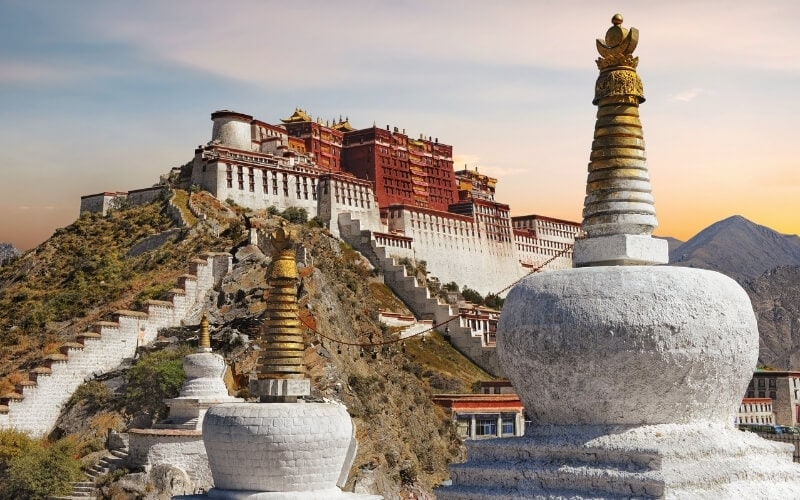
Sprawled across the eastern edge of the Tibetan Plateau, in the remote northern tip of China’s Sichuan province, Ruoergai town and county do not appear on Google maps. To Google, this locality is known by its Tibetan name, Zoige.
After 12 hours of following your car GPS from Chengdu to Zoige, climbing onto the Tibetan Plateau , Chinese road signs welcome you to Ruoergai, 3,500 meters above sea level.
Top cultural experiences on the Tibetan Plateau
Witness nomadic culture: Remote and isolated, Zoige/Ruoergai is the best place in the world to witness the disappearing Tibetan nomadic culture. All you have to do is drive around this vast, open grassland to catch a glimpse. You’ll see white nomads’ tents with smoky chimneys scattered on the sides of the road, surrounded by herds of domestic yak and protected by the menacing Tibetan mastiffs. The nomads are mistrustful of outsiders, which is not surprising given political tensions in the region.
Go horse trekking: Yet there is a way to experience the nomadic culture first-hand here – by taking a horse-trekking adventure with the local Tibetan Horse Trekking Agency in the nearby town of Langmusi. Tours range from a day hike to the hills – the domain of the nomads – to a multi-day horseback adventure with overnight stays in nomad tents. Guides are local Tibetans, so while you may not be having extensive discussions in English, you’ll be welcome in nomadic households.
Visit the monasteries and mosques in Langmusi: Encircled by forest-covered mountains, the small sleepy town of Langmusi is inhabited by three ethnic groups: Amdo Tibetans, Han Chinese and Hui Muslims. So, even just a visit to the town is a unique cultural experience. There are two large Tibetan monasteries on the hills above the town and a Hui mosque at its centre.
The nearest airport to Langmusi is Gannan Xiahe Airport, 130 km away. From Xiahe, you can take a bus to Langmusi, or arrange a car with a driver via Tibetan Horse Trekking.
By Margarita from The Wildlife Diaries
Taiwan – for night markets, Confucianism & forbidden relics

An island nestled off the coast of Mainland China, Taiwan is fast becoming one of the best cultural tourism destinations in Asia.
Its long history and combination of cultural influences – including Indigenous culture, Mainland China, Korea and even Japan – make Taiwan as intriguing as it is complex. Bustling with life, amazing food and beautiful scenery, this island has it all.
Top cultural experiences in Taipei
Eat your way through the Night Markets in Taipei: The capital city of Taiwan, Taipei, offers a world of things for people to see and do . One of the most popular culturally immersive activities for visitors is to head down to the local night market, the biggest one being the Shiling Night Market. Along with delicious local foods, you can also find clothes, accessories, games, cosmetics and more. Night Markets are significant because they play a huge role in Taiwanese culture . Locals and tourists alike flock to these areas each and every day to shop and socialise.
Observe the rituals at a Taiwanese temple: Taiwan is a very religious country with most people following either Buddhism or Confucianism. Many temples are built around these religions in a very extravagant manner. Visitors can take part in the prayer ceremony, burn some incense, or just sit back and observe. If you’re interested in visiting these temples, one of the best places to start is the Songshan Ciyou Temple, which is conveniently located right next to the Raohe Night Market.
Visit the National Palace Museum: This museum houses thousands of cultural relics, art and artefacts, including many items that were carried out of the Forbidden City in China and moved to Taiwan to protect them from destruction during the Chinese Civil War. It’s one of the largest collections of its kind in the world. Here, you can learn how the Chinese language was formed, see what kinds of ancient tools and weapons were used throughout history, and witness what life was like many hundreds of years ago.
By Wayne from Daily Tourist
Learn more: The best cultural experiences in Taiwan .
Cultural trips in Africa & the Middle East
Ethiopia • Oman • Mauritius • Morocco
Ethiopia – for coal-fired coffee, churches & injera

Ethiopia is a country like no other. Here in North East Africa, the steaming tribal lowlands of the Rift Valley collide with the cool thin air of the Northern highlands. The fertile lands towards the West produces some of the world’s best coffee, while the wind from the East carries whispers from Arabia. It’s truly a spectacular place to visit.
Ethiopia is even more unique in terms of its cultural treasures. As the only country in Africa never to be colonised, Ethiopia is a truly African country with African culture. If you want to see lions chase and eat zebras, go somewhere else. If you want to see and experience African culture at its purest, then book your ticket to Ethiopia already!
Top cultural experiences in Ethiopia
Visit the city of Lalibela: Situated in the northern highlands, Lalibela is the most important pilgrimage site in the country for the predominantly Orthodox Christian population of Ethiopia. It is here that you’ll find eleven incredible churches completely hewn from the rock. If you see only one place in Ethiopia, make it Lalibela.
Attend Sunday Mass: The UNESCO recognised Lalibela churches still function as churches, and attending a Sunday morning service before sunrise with hundreds of pilgrims is an experience that you won’t forget. Afterwards you can join the crowds eating injera while basking in the morning sun. Be prepared for the fact that everyone will want to come and talk to you.
Hike to a remote mountain community: Hiking into the mountains surrounding Lalibela will take you to small farming communities where time has seemingly stood still. It’s also possible to visit one of these communities for a day and learn how to cook traditional Ethiopian dishes such as injera , tibs or shiro . You’ll also find a few cave churches and monasteries in these mountains. The priests will be eager to show off their ancient treasures for a small tip.
Participate in a traditional coffee ceremony: Ethiopia is considered the birthplace of coffee, and man are you in for treat! The best way to drink a cup of buna (Ethiopian coffee) is to attend a coffee ceremony. It starts off with the hostess washing green coffee beans and then roasting them in a pan over an open fire. The coals are infused with natural incense made from tree resin. You’ll see bags of these tree resin for sale in markets all over Ethiopia. Finally the coffee beans are ground and brewed in a special coffee pot called a jebena . It’s expected that guests will have at least three cups of buna, but why stop there?
By De Wet & Jin from Museum of Wander
Oman – for dhow boats, frankincense & Bedouin culture

Unlike some of its more glitzy neighbours who’ve traded their souqs for skyscrapers, Oman has approached cultural preservation from a different angle. It’s often called out as the most culturally ‘authentic’ country in the region .
This part of the Middle East has long been a melting pot of Arabian and East African cultures, with a strong South Asian influence. Semi-nomadic Bedouin tribes that paint the desert with their costumes and brightly coloured carpets are less accessible, but a range of tourist-friendly desert experiences allow you to brush with this part of Omani culture.
Contemporary Omani traditions are deeply tied to Ibadism and revolve around an annual calendar of Islamic festivities.
Top cultural experiences in Oman
Get lost in a souq: Perfumed by rose petals and frankincense, Oman’s souqs are a treat for the senses. Roam displays of henna and spices while getting a feel for commerce and culture. Muttrah Souq in the capital, Muscat, and the delightful Nizwa Souq are both must-visits.
Visit a dhow workshop in Sur: Not only are Oman’s wooden boats an impressive feat of engineering, they’re steeped in legend and tradition. In Sur, the home of Sinbad the Sailor, you can watch expert craftsmen fitting the vessels together without glue or nails.
Spend the night at a desert camp. The Sharqiya Sands, Oman’s slice of The Empty Quarter, is the territory of nomads. Bedouin-inspired desert camps recreate the experience of staying with a Bedouin tribe – albeit with a luxury edge! Spending the night in a desert camp involves listening to folk music, eating Omani food, while the very lodgings – the tent lined with carpets you’re sleeping in – is part of the Bedouin tradition.
Mauritius – for street food, Sega & sugarcane
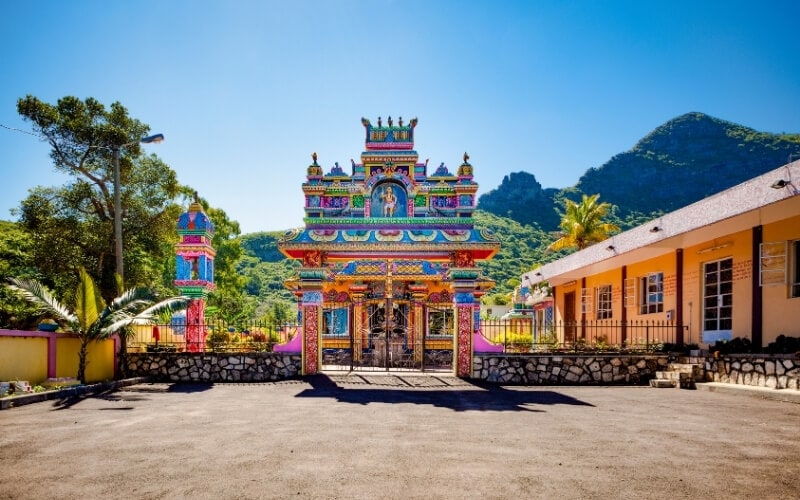
The island nation of Mauritius is normally associated with splendid white-sand beaches and luxury resorts – thus its inclusion on this list of cultural trips might come as a bit of a surprise.
Yes, this is an island paradise incarnate, but it also happens to be one of the most ethnically and religiously diverse countries in the region, with African, Indian, Chinese and South Asian cultures – along with layers of Dutch, French and British influence – all accounted for.
Many elements of Mauritian culture can be traced back to the island’s plantation roots and the legacy of slavery. Mauritians honour this period of history while proudly showing off their culture in everything from the cuisine to the music.
Top cultural experiences in Mauritius
Take a street food tour of Port Louis: Mauritian food, much like Mauritian society itself, combines Chinese, Indian, Creole, East African and European flavours. Must-try dishes include vindaye , an adaptation of West Indian vindaloo, Chatini (chutney) is a popular condiment and traces its roots back to British-Indian origins, briani (biryani) and creations gifted from the island’s Chinese community, such as bol renversé (a layered dish of rice, chicken, shrimp and vegetables). The best way to get a grasp of these edible delights is by joining a guided street food tour of the capital, Port Louis .
Watch a Sega performance: Recognised by UNESCO for its value to Intangible Cultural Heritage, Mauritian Sega is a performance art characterised by music, song, dance and costume. It started out as an expression of pain and loss practiced by slave communities but has morphed over time into a colourful, optimistic expression of local culture. Elaborate Sega costumes moving to the tune of Creole lyrics is a . Many hotels offer Sega performances.
Visit an old sugarcane farm: Mauritius’ history of slavery and plantation farming has left an indelible mark on the island. Visiting preserved plantation homes and crumbling sugar mills is a step back in time to the colonial period, while regenerated cane fields such as those on Frederica Reserve now serve as a sanctuary for the island’s wildlife.
Learn more: 8 ways to experience Mauritian culture .
Morocco – for riads , tajines & mint tea

By all accounts, Morocco is a beguiling destination . The most popular country to visit in North Africa, it stands out for its diversity of landscapes and cultural experiences.
Morocco is an important gateway to the rest of Africa, and has been since Roman times. Its position at the northernmost tip of the continent – with a coast shared between the Atlantic and the Mediterranean – means it’s been at the centre of conquests and various cultural overlap throughout the ages.
Today, Morocco lives with the legacies of various civilisations, including Roman, Phoenician, Jewish, Berber, Arabic, Spanish and French. Morocco has a very hospitable culture, steeped in a refined art of living. When you visit the imperial cities of Marrakech and Fes, or the coastal towns of Essaouira and El Jadida, you will notice a multitude of little details typical of Moroccan life.
This art of living and careful hospitality is very important in Morocco and, as a visitor, you can experience it in many different ways.
Top cultural experiences in Morocco
Try your hand at Moroccan cuisine: Moroccan cuisine is world-famous for its use of spices and mix of sweet and savoury flavours. Every restaurant offers a selection of delicious tajines , a stew of meat and vegetables. Couscous is on the menu every Friday and if you like sweets, you will be in heaven. Sweet biscuits mixing flower, almond and spice flavours make a delicious afternoon treat. If you’re interested in learning new skills, cooking classes are often available in traditional riads in Marrakech. Moroccan cuisine takes time and care, but the results are delicious and quite easy to recreate at home.
Shop for authentic handicrafts at a souq : Another great way to experience the heart of Morocco is to spend time in the souks. Shopping in Morocco is a fun experience and haggling for a good price is the norm. You have to engage with merchants, ask questions, make small talk and, most importantly, have fun with it! Never lose your smile and sense of humour, and it will great fun! The most spectacular shopping experience is in Marrakech due to the volume and intensity of the medina. It’s easy to get lost but that’s part of the experience too!
Sip mint tea, a Moroccan tradition: When you travel throughout Morocco, you will notice that mint tea is served everywhere. This is a pivotal element of Moroccan hospitality. Green tea is mixed with fresh mint leaves and served in little decorated glasses. There is a little bit of theatre in serving mint tea, with the brass or silver teapot held high above the glass… Traditionally, mint tea is served with a lot of sugar, but these days it is common for sugar to be served on the side, so you can dose it yourself. And you can even buy a set of decorated tea glasses in the souk as a souvenir!
By Delphine from Lester Lost
How to have a more culturally immersive travel experience anywhere in the world
It doesn’t matter if it’s a remote community or a popular city – there are things you can do to have a more enriching cultural travel experience no matter where you’re going.
Here are 10 practical tips to help you on your way.
1. Do your research before you go: Familiarise yourself with local customs and learn a bit of the history so you know what types of experiences to look out for. This guide is a great start!
2. Seek out festivals and special events: Many tourism boards feature a calendar on their website, or you can try using Facebook to find local events. Check out my four-part series about the world’s best festivals, starting here .
3. Eat local. Food is one of the easiest routes to culture. Here are my tips for eating local when you travel.
4. Stay at a homestay. Spending time with a local family will give you an invaluable insight into daily life. Here are my tips for using homestays in Vietnam.
5. Participate in a class or workshop . Trying a cooking class, handicraft workshop or any other hands-on experience is one of the easiest ways to immerse yourself in local culture. I recommend using Get Your Guide , Airbnb Experiences, Cookly or Backstreet Academy to find opportunities.
6. Learn a bit of the language. Even knowing a few basic words will show you’re interested and can go a long way to forming relationships.
7. Shop local. Support artisans and heritage skills. Here are my tips for finding authentic and meaningful souvenirs .
8. Slow down. The best cultural experiences are often spare-of-the-moment and can’t be planned in advance. Keep some flexibility in your travel itinerary for spontaneous detours.
9. Go your own way. You don’t always have to follow the pack. Venturing away from the crowds will often give you access to unique and meaningful experiences.
10. Don’t be afraid to ask questions. If in doubt, ask a local. Remember that cultural tourism is all about exchange – don’t just take, make sure you give something back in return.
Are you a cultural tourist? Which of these destinations is your favourite? What other places would you add to the list? I’d love to hear your suggestions in the comments below!
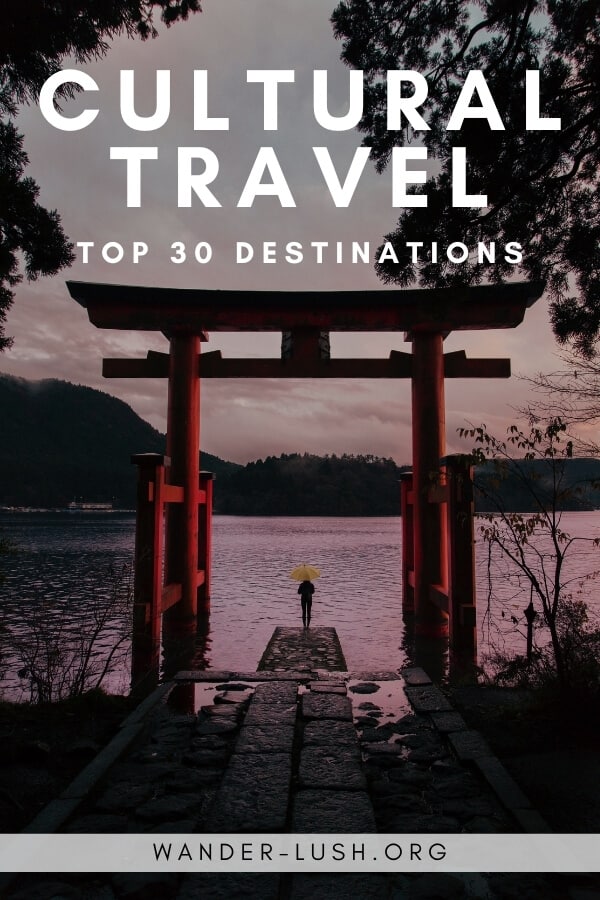
World’s best cultural trips: Save it & share it on Pinterest
More cultural travel inspiration.
- 30+ amazing cultural experiences around the world
- Best cultural festivals around the world
- Best destinations for tea culture
- Best destinations for wine culture
- Unique food cultures around the globe
- My collection of cultural travel guides for 30+ cities and regions
- World’s best unique & underrated travel destinations
This is a very wonderful article about cultural destinations! Thank you so much for sharing!
One can easily visit India and experience the different kinds of cultures in a particular place. Tourism in India has been much more managed and safe with passage of time. Rajasthan tourism has been the most reliable and safe in India. One can enjoy all the traditional dishes and enjoy living in the palaces as a hotel room in different cities. But, whenever you are visiting to Rajasthan, India travel guide is a must because one can easily lose track of pathways in the puzzle like roads of the cities in Rajasthan. One can easily plan for a Kerala tour packages because of the minimal expenses in the state.
Leave a Reply Cancel reply
Your email address will not be published. Required fields are marked *
- Subscribe to future posts
Cultural tourism

Select your language
Official eu languages.
- slovenščina
Culture and Creativity
Sustainable cultural tourism.
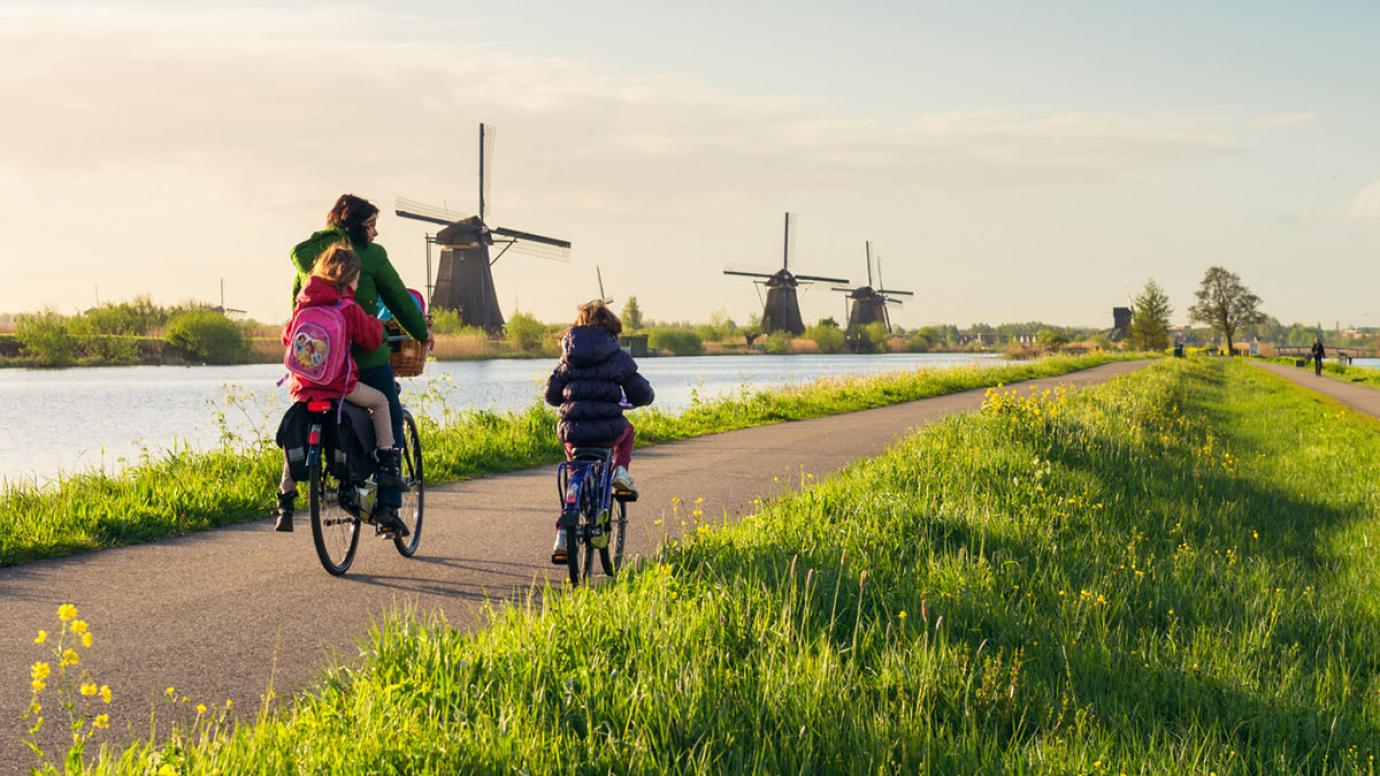
Europe’s cultural heritage is a valuable resource in the fields of tourism, education, employment and sustainable development. Sustainable cultural tourism is a vital part of regional and macro-regional development strategies. In this regard, culture is both a driver and an enabler of sustainable development.
Tourism: the balance between development and the protection of cultural heritage
Tourism is an excellent way to encourage and provide access to cultural heritage, but it also brings with it challenges related to overcrowding, cultural appropriation and the loss of authenticity. Tourism brings money and jobs to cities and regions, but it can also damage residents’ day-to-day lives, as well as the area’s culture and heritage.
Given the possible negative effects of over-tourism and its impact on cultural heritage, some local communities and heritage experts have at times opposed tourism and its associated development.
Sustainable cultural tourism offers a new perspective, as it places cultural heritage and local communities at the centre of decision-making processes.
Involving local communities and other stakeholders in the decision-making processes is key to ensuring results benefit both cultural heritage and the local population. The objective of sustainable cultural tourism is to ensure good conservation practices along with authentic interpretation that supports the local economy.
Find out more about what the European Commission is doing to encourage sustainable cultural tourism .
Sustainable cultural tourism Open Method of Coordination working group
The Work Plan for Culture adopted by EU Member States for the period 2015-2018 included a working group composed of European experts on sustainable cultural tourism under the Open Method of Coordination approach.
The resulting report includes the first definition of sustainable cultural tourism, as well as recommendations and guidelines for policymakers and 27 case studies illustrating best practices in both tangible and intangible cultural heritage.
Read the Sustainable cultural tourism report .
Selected projects
Spot project.
Funded under the Horizon 2020 programme, this project aims to develop a new approach to understanding and addressing cultural tourism and to promote the development of disadvantaged areas.
Find out more about the SPOT project .
SmartCulTour
Funded under Horizon 2020, this project supports development in European regions with important cultural assets, both tangible and intangible, through sustainable cultural tourism.
Find out more about SmartCulTour .
Funded under Horizon 2020, this project connects cultural tourism stakeholders and researchers who have new approaches and methods to support European cultural tourism. The aim of the project is to reinforce a feeling of belonging and to value minority cultures.
Find out more about the IMPACTOUR project .
The European Destinations of Excellence (EDEN)
EDEN promotes models of sustainable tourism across the EU. Through this initiative, partnering countries select and promote “destinations of excellence”.
EDEN draws attention to emerging, non-traditional European destinations, highlighting their values and character. It also works as a platform for sharing good practices between awarded destinations. The European Commission and the National Tourism Bodies choose a theme every year. Cultural tourism was the EDEN theme in 2017 .
Discover the winning destinations on the EDEN website .
Thanks for your feedback
We are happy to see that your experience was positive. Don't forget to share the pages you like with your friends and colleagues.
If you need to ask a question, please contact Europe direct .

IMAGES
VIDEO
COMMENTS
Cultural tourism is a type of tourism in which the visitor's essential motivation is to learn, discover, experience and consume the cultural attractions and products offered by a tourist destination. These attractions and products relate to the intellectual, spiritual, ...
The World Tourism Organisation (WTO) (1985) broadly define cultural tourism as the movements of persons who satisfy the human need for diversity, tending to raise the cultural level of the individual and giving rise to new knowledge, experience and encounters. Cultural tourism is commonly associated with education in this way, some describing ...
This webpage provides UN Tourism resources aimed at strengthening the dialogue between tourism and culture and an informed decision-making in the sphere of cultural tourism. It also promotes the exchange of good practices showcasing inclusive management systems and innovative cultural tourism experiences.. About Cultural Tourism. According to the definition adopted by the UN Tourism General ...
Cultural tourism is a significant and growing aspect of the global tourism industry. The United Nations World Tourism Organization (UNWTO) defines cultural tourism as the movement of people to cultural attractions away from their normal residence, with the intention of gathering new information and experiences that satisfy their cultural needs. It encompasses various activities undertaken by ...
Cultural tourism is a form of travel that focuses on exploring and appreciating the unique traditions, history, and practices of a place. It is not just about visiting museums or attending festivals, but also delving deeply into the everyday aspects of local life. Authentic local food, local markets, and even casual chats with locals are an ...
The growing body of cultural tourism scholarship is confirmed by a literature search on the term "cultural tourism" on Google Scholar. As Fig. 1 indicates, cultural tourism sources have risen from less than 100 in 1990 to over 6000 in 2016. Growth was particularly sharp between 2005 and 2015, and cultural tourism publications have risen as a proportion of all tourism publications, to reach ...
Bringing cultural tourism back in the game The COVID-19 pandemic has stopped cultural tourism in its tracks. Throughout 2020 international arrivals plunged by 74% worldwide, dealing a massive blow to the sector, which faces ongoing precarity and unpredictability. Amidst international travel restrictions, border closures and physical distancing measures, countries have been forced to impose ...
Cultural tourism is a type of tourism activity in which the visitor's essential motivation is to learn, discover, experience and consume the tangible and intangible cultural attractions/products in a tourism destination. These attractions/products relate to a set of distinctive material, intellectual, spiritual and emotional features of a ...
In discussing the relationship between tourism and culture, it is said that "the convergence between tourism and culture, and the increasing interest of visitors in cultural experiences, bring unique opportunities as well as complex challenges for the tourism sector" (UNWTO 2021).The challenges include the accelerated commercialization of culture which causes overtourism, the crisis of ...
Cultural tourism is a program in which tourists appreciate tangible and intangible aspects of culture at a given destination, from architecture, visual arts, dance performances, festivals, cuisines, to history.In recent years, it "has become an umbrella term both to identify specially organized culture-based tourism experience and to provide unity and add depth to a diverse range of culture ...
Although tourism and culture have always been inseparable concepts, it is only in recent decades that this link has been more explicitly identified, giving rise to what is known today as cultural ...
Cultural tourism is a travel and tourism trend that is here to stay. With more and more accessibility to the world and the people in it, there is peak interest in being able to immersively travel. Peaks an interest to immerse yourself in a particular culture. Creates meanings, stories and understanding between host and guest.
All Regions; 14 Mar 18 Tourism and Culture Synergies The UNWTO report on Tourism and Culture Synergies highlights the symbiotic relationship between tourism and culture and the interdependency of the two sectors. The report, undertaken through a survey of UNWTO member states and expert opinion, affirms that cultural tourism plays a major role in global tourism today.
Cultural tourism as a social phenomenon and motif of study arose as a result of the Edinburgh Festival of 1947, when in the midst of the post-war period, Europe, devastated and divided by World ...
Culture has become a key product in the international tourism market, with tourists engaged in cultural activities accounting for 40% of international arrivals in 2016 (UNWTO, Citation 2016).Destinations build on cultural supplies to conform their tourism offer, given the interest of visitors for cultural attractions (OECD, Citation 2009).City tourism relies on culture as a major product (ETC ...
Cultural tourism is a type of special interest tourism involving leisure travel for the purpose of viewing or experiencing the distinctive character of a place, its peoples, and its products or productions. A wide range of destinations and cultural activities fall under the umbrella heading of cultural tourism: visits to UNESCO World Heritage ...
Preserving Cultural Identities for the Future of Tourism. All Regions; 13 Dec 2019 Kyoto (Japan), 13 December 2019 - The World Tourism Organization (UNWTO) and the United Nations Educational, Scientific and Cultural Organization's (UNESCO) Fourth World Conference on Culture and Tourism spotlights the added value of culture for destinations and focuses on the future sustainability of ...
Cultural and heritage tourism: an introduction by Dallen J. Timothy, Bristol, UK, Channel View Publications, 2020, 576 pp., $149.95 (hardback), ISBN: 978184541771 Deepak Chhabra School of Community Resources and Development, Arizona State University, 411 North Central Avenue, Phoenix, AZ85004, USA Correspondence [email protected]
According to the United Nations World Tourism Organization, cultural tourism is "movements of persons for essentially cultural motivations such as study tours, performing arts and cultural tours, travel to festivals and other cultural events, visits to sites and monuments, travel to study nature, folklore or art, and pilgrimages." ...
Discover the best cultural trips and immersive travel experiences our world has to offer. From Southern India to the High Arctic, here are the top 30 countries and regions for cultural tourism this year.. With many of us now on the lookout for deeper and more meaningful travel experiences, cultural tourism - travel that prioritises learning about and appreciating different ways of life ...
Cultural tourism. Latest. News. Coding the future: UNESCO webinar on sustainable tourism fosters community empowerment with digital storytelling. 18 April 2024. ... Announce the Sustainable Tourism Project at the Islas Marías Tourist Center in Mexico, SECTUR, TURIIMAR, UNESCO, SECTUR Nayarit, and Airbnb . 20 February 2024.
Sustainable cultural tourism. Culture is both a driver and an enabler of sustainable development. Europe's cultural heritage is a valuable resource in the fields of tourism, education, employment and sustainable development. Sustainable cultural tourism is a vital part of regional and macro-regional development strategies.
About Us. The World Tourism Association for Culture and Heritage (WTACH) is the global authority on the protection and preservations of cultural heritage assets through the development of responsible, sustainable, ethical, and equitable tourism practices and policies.